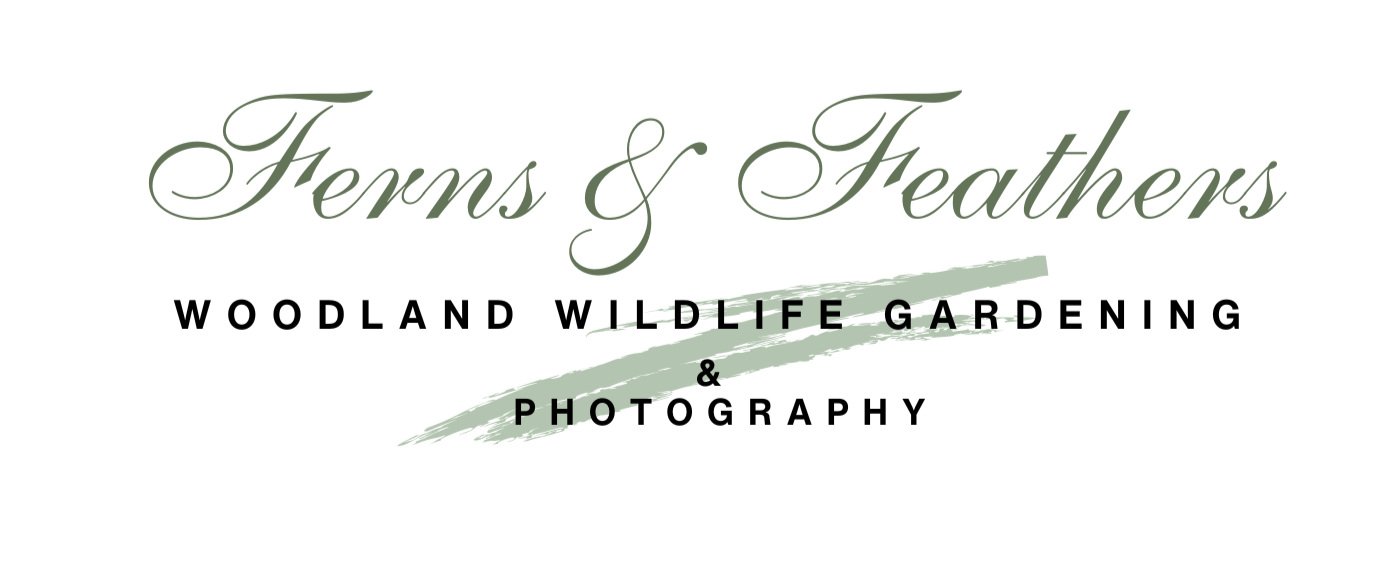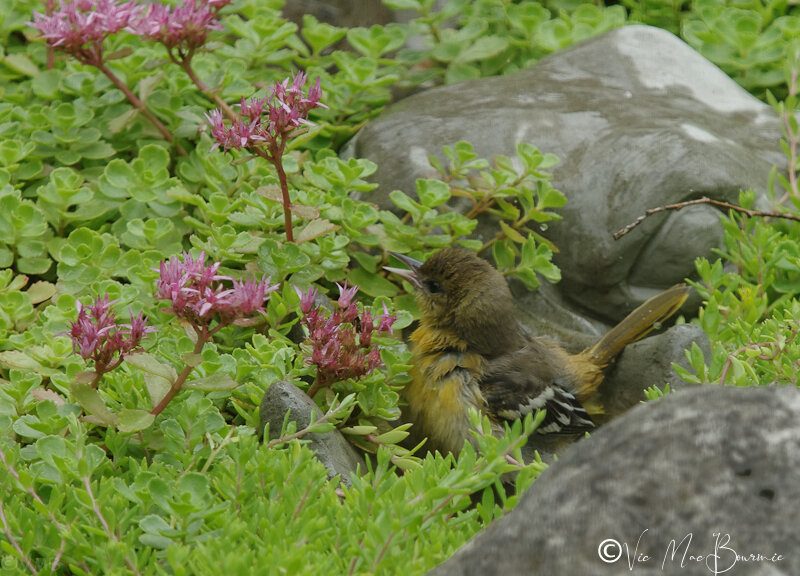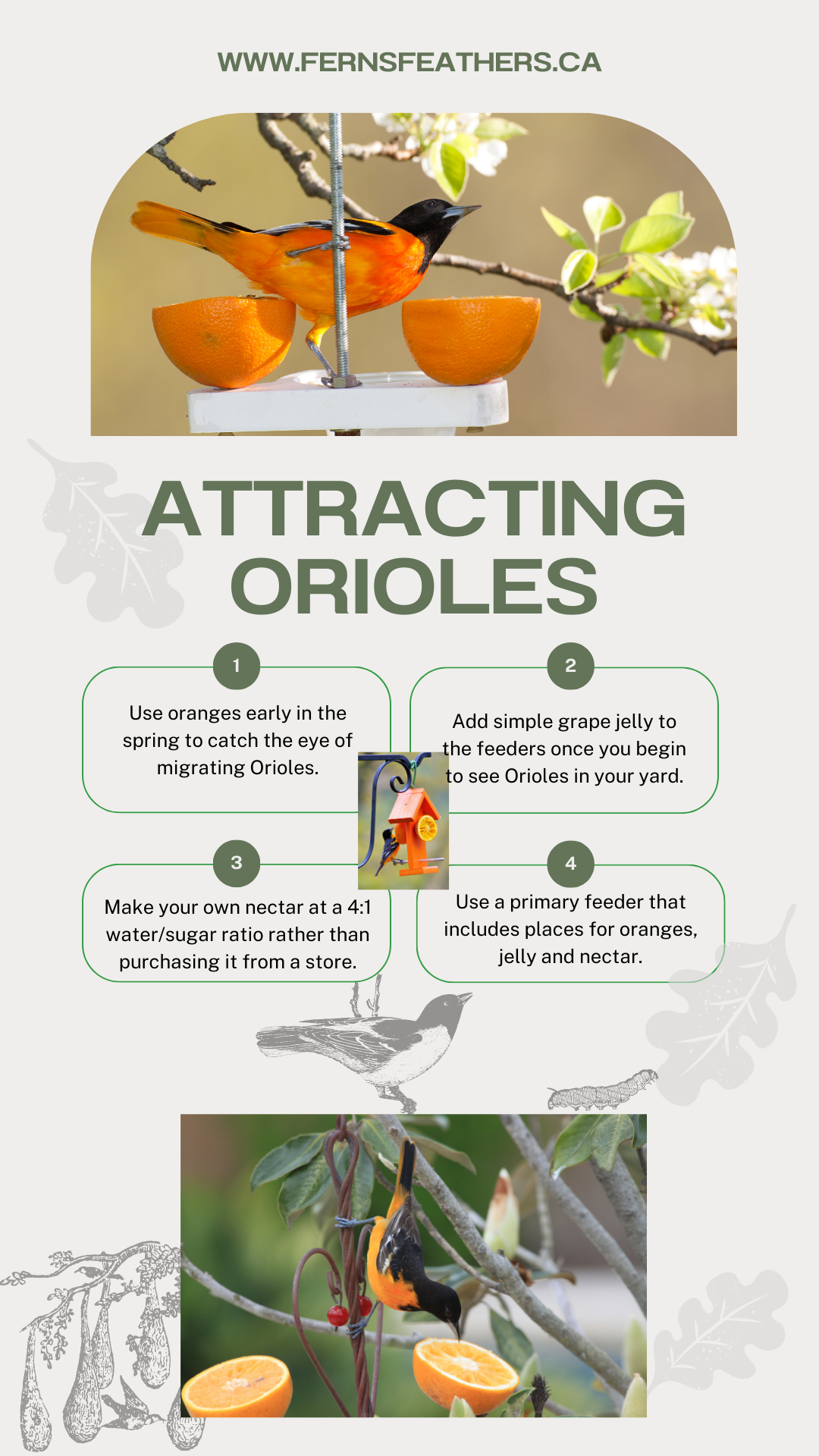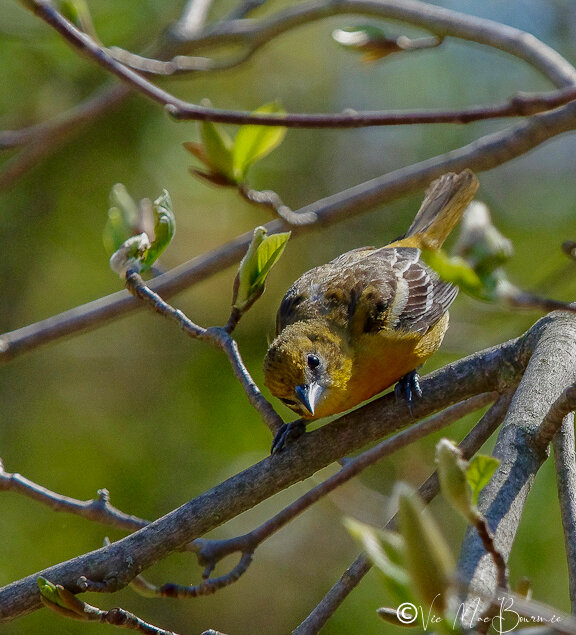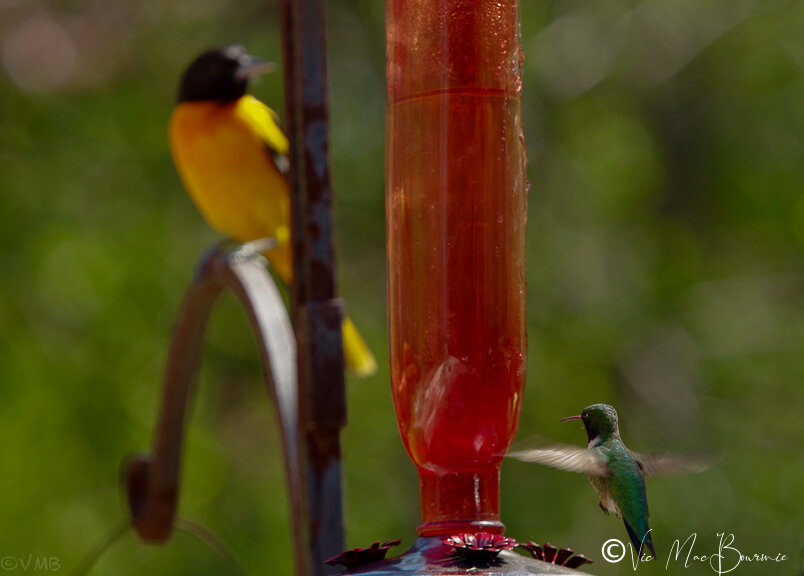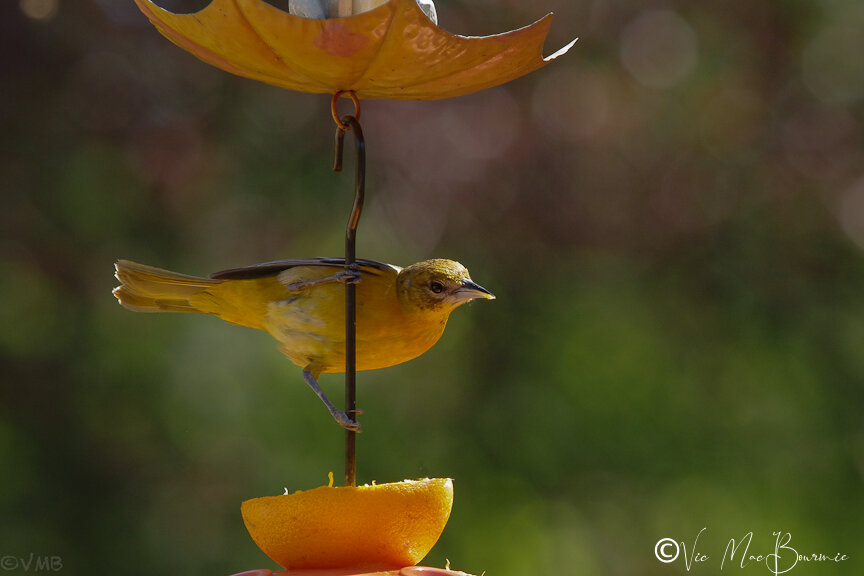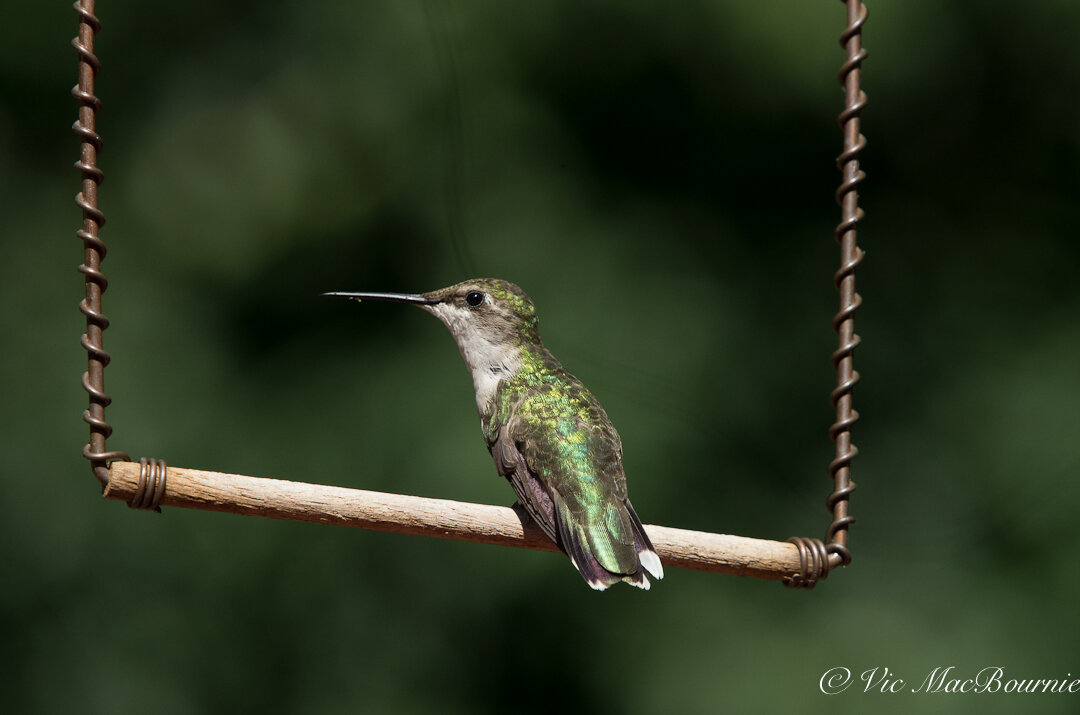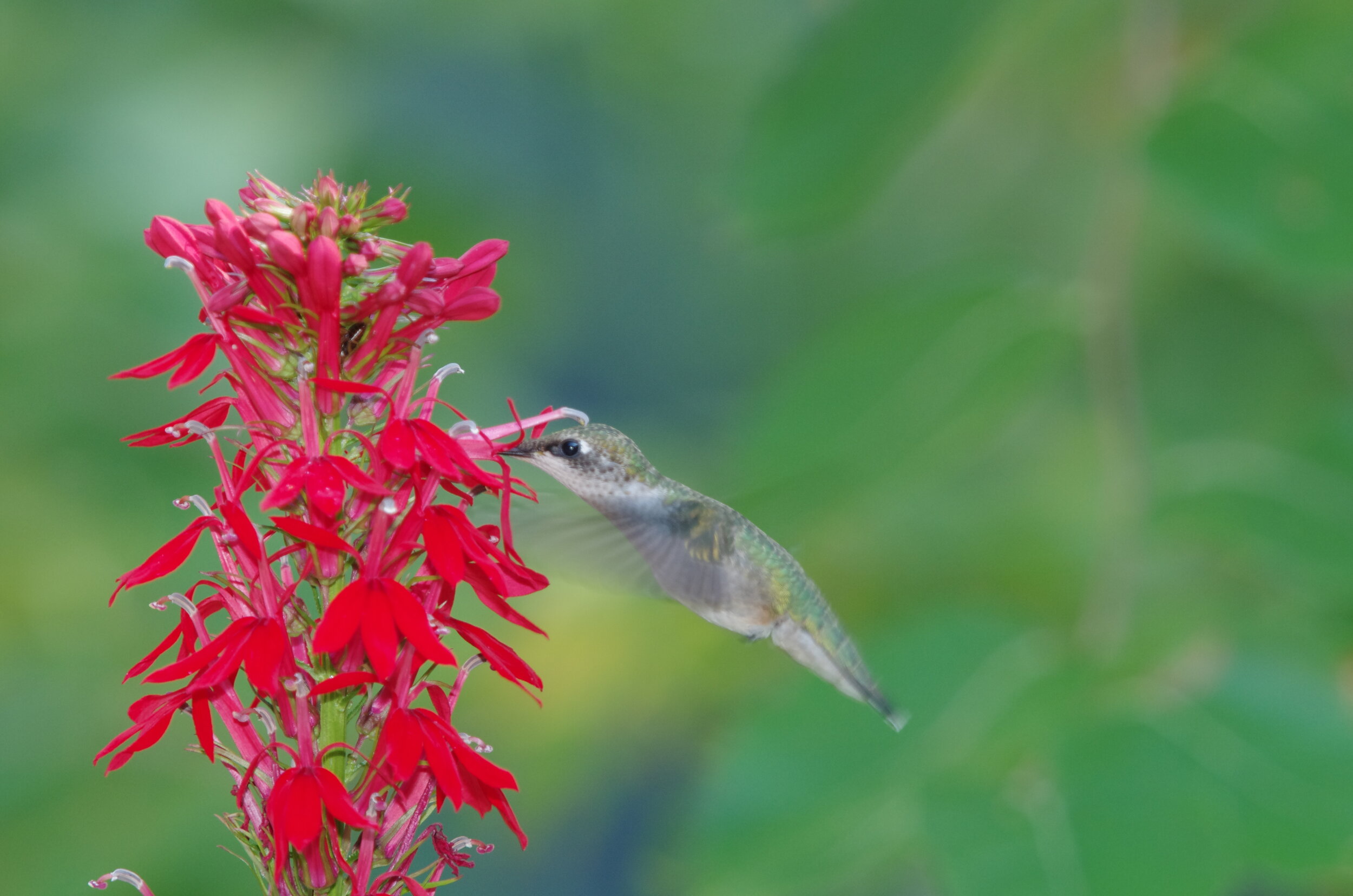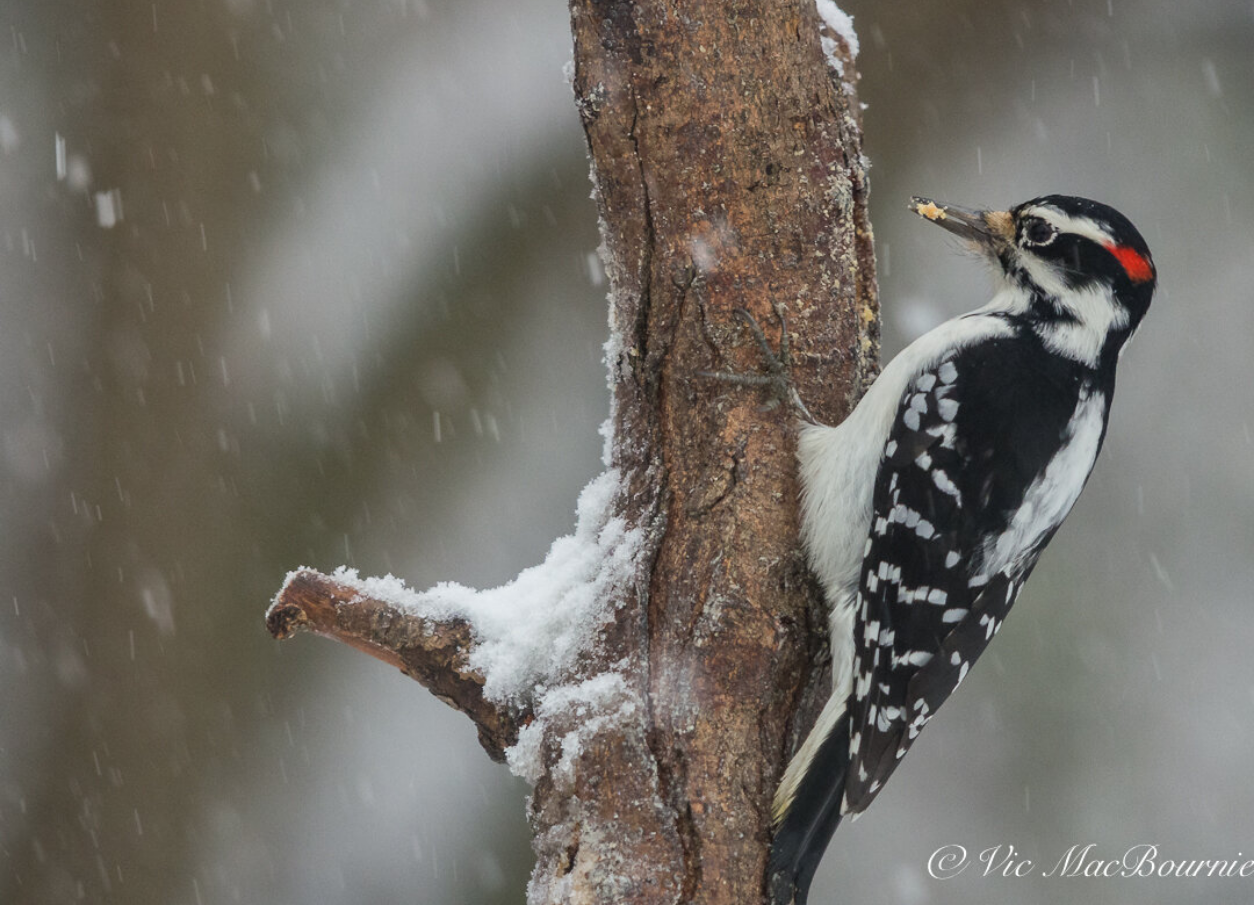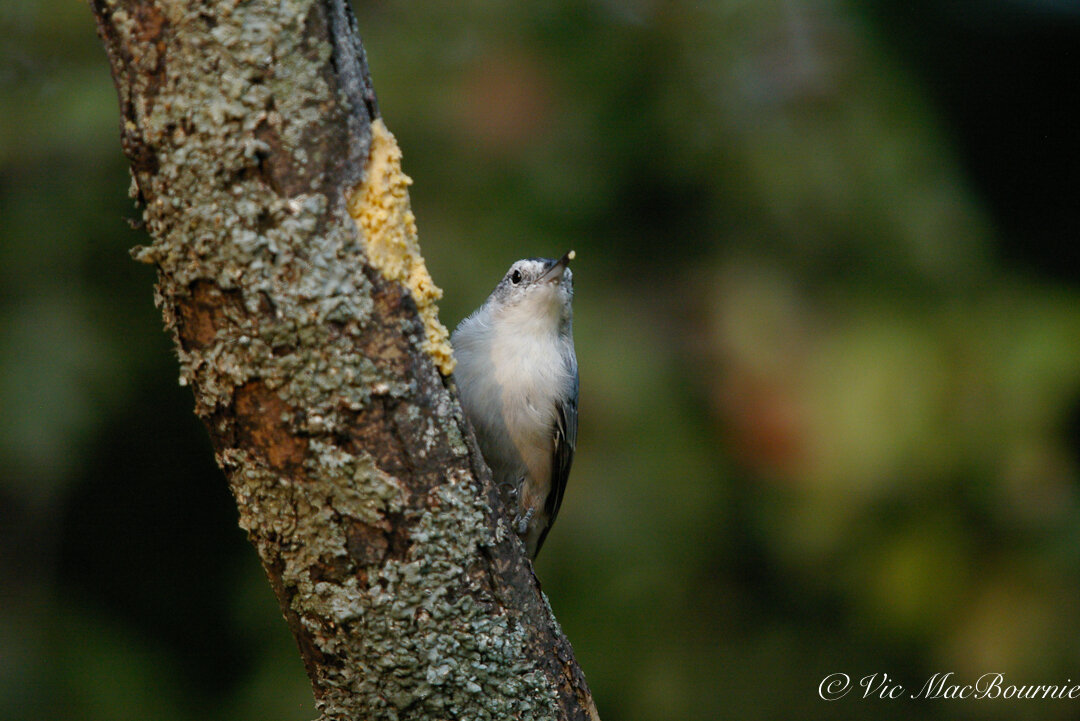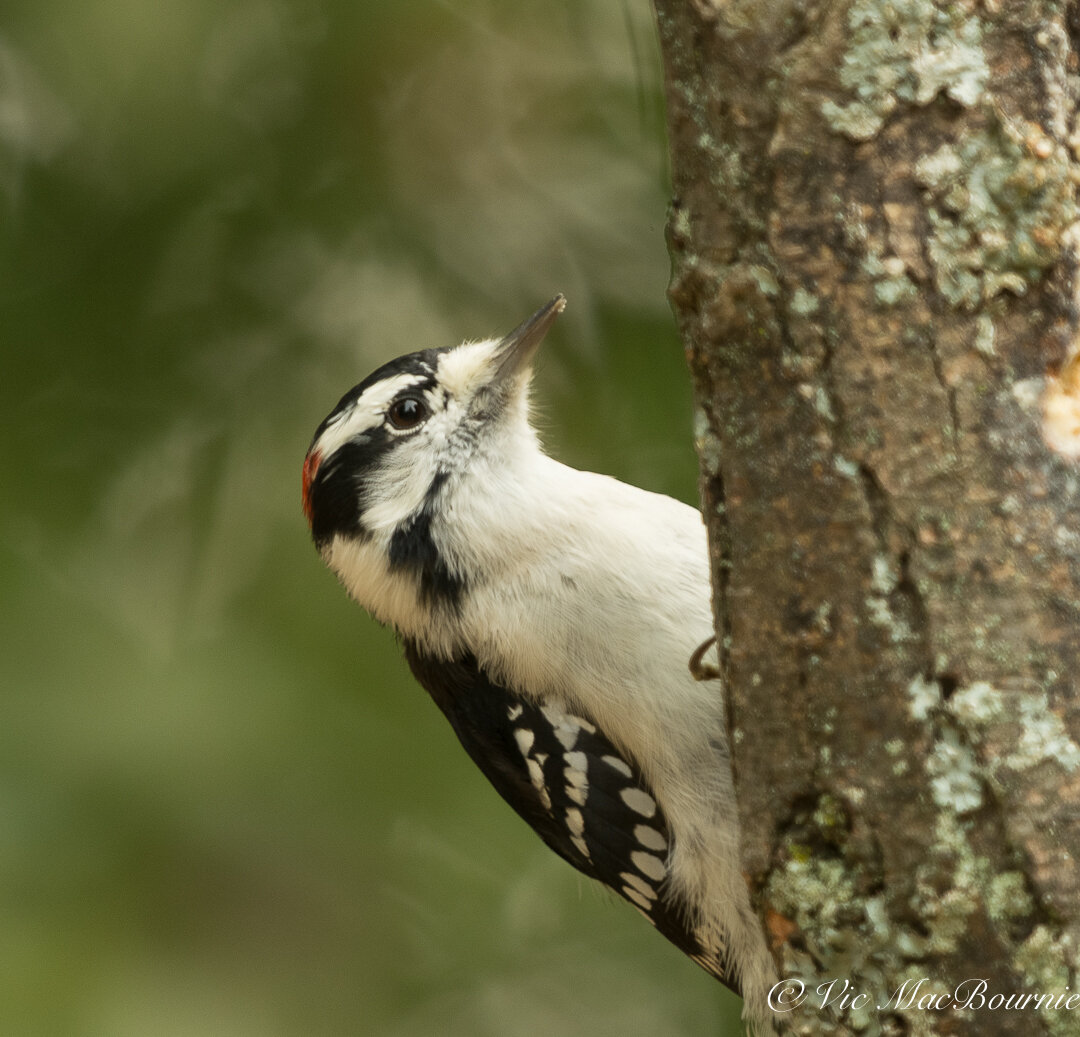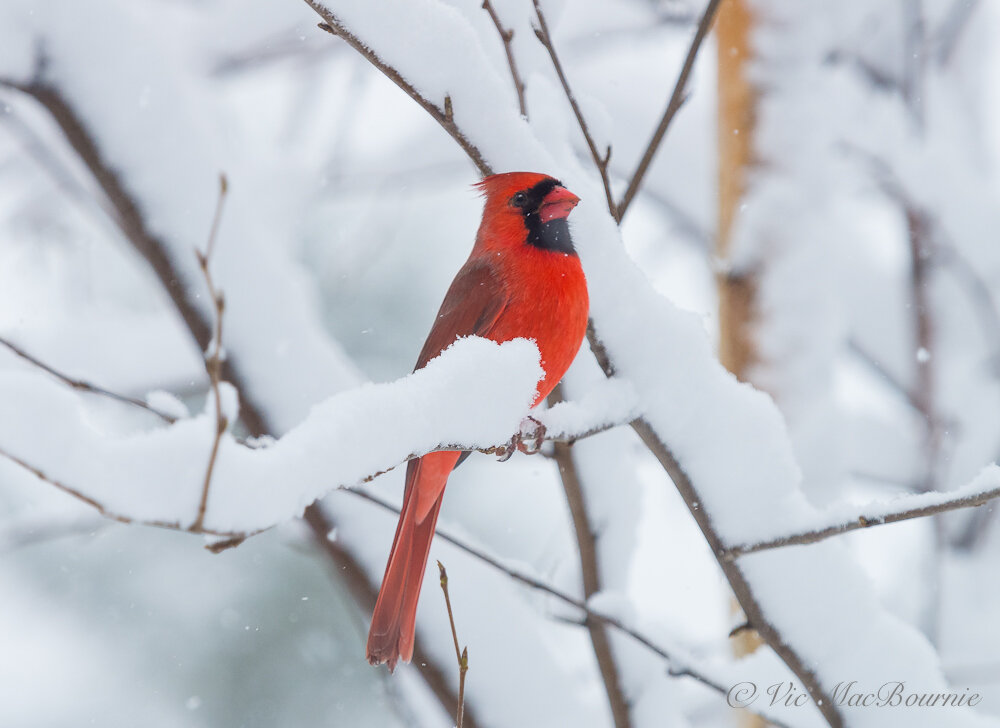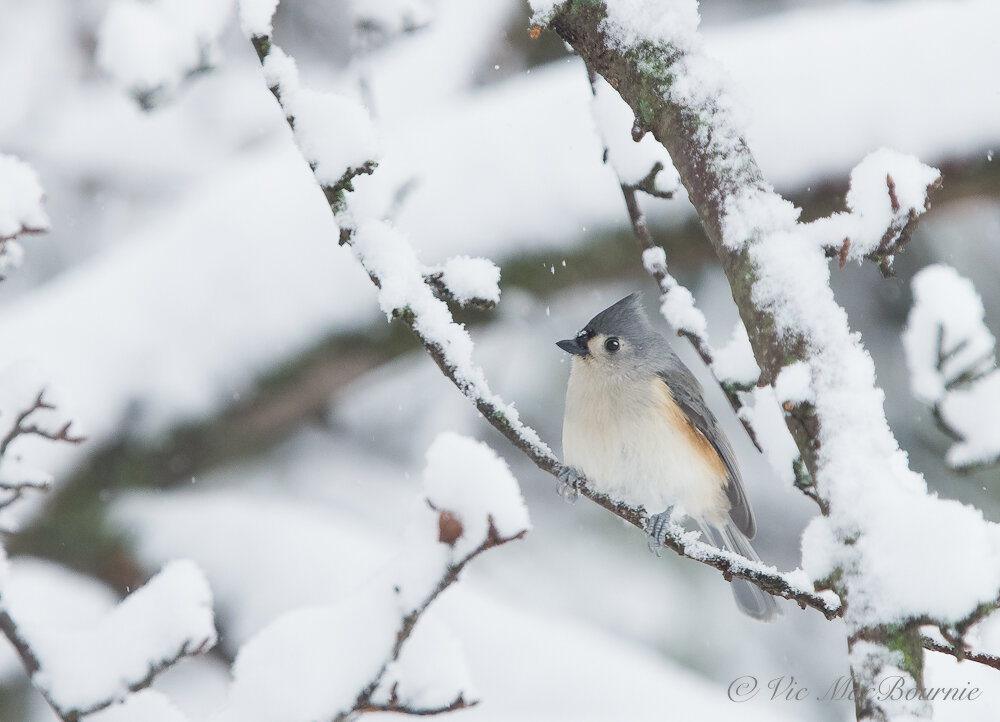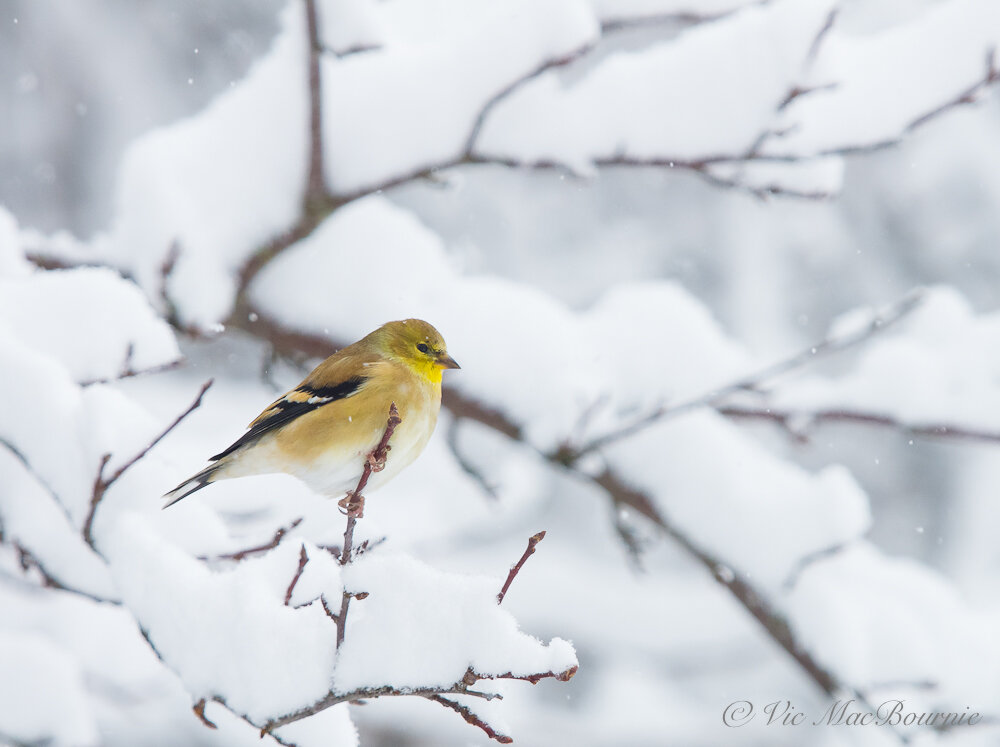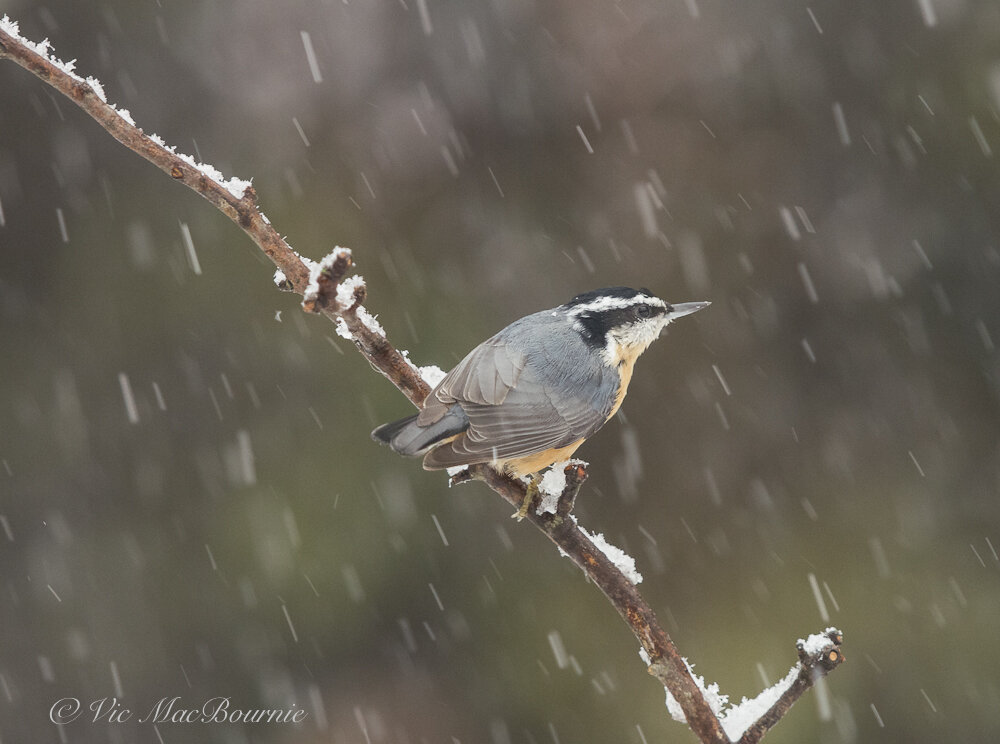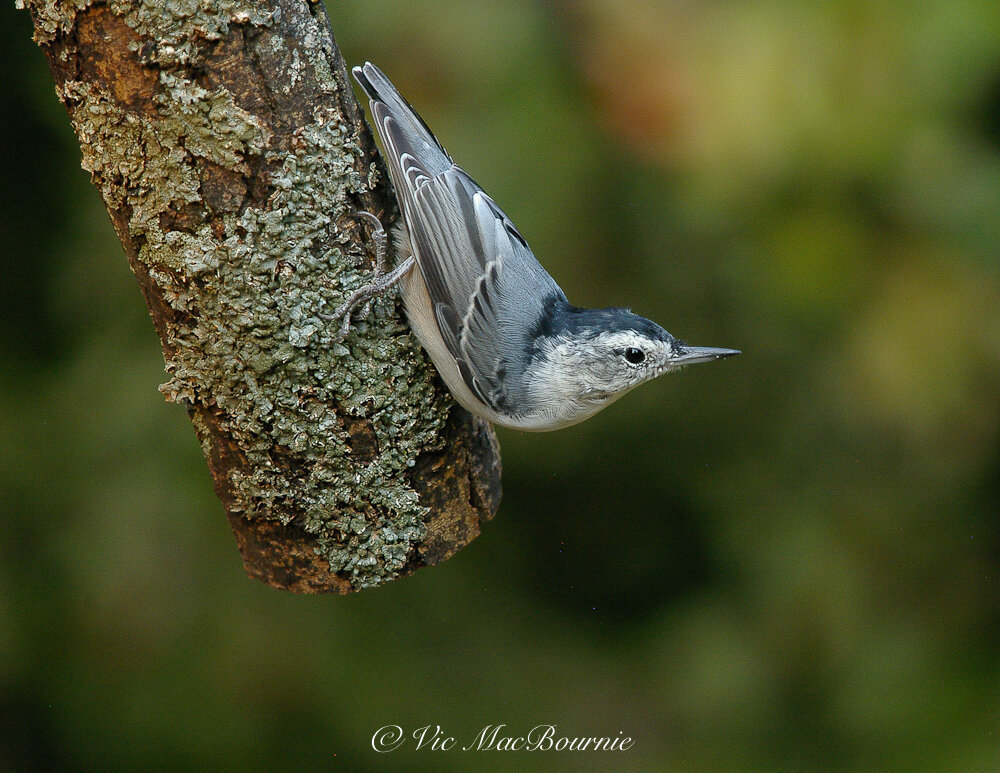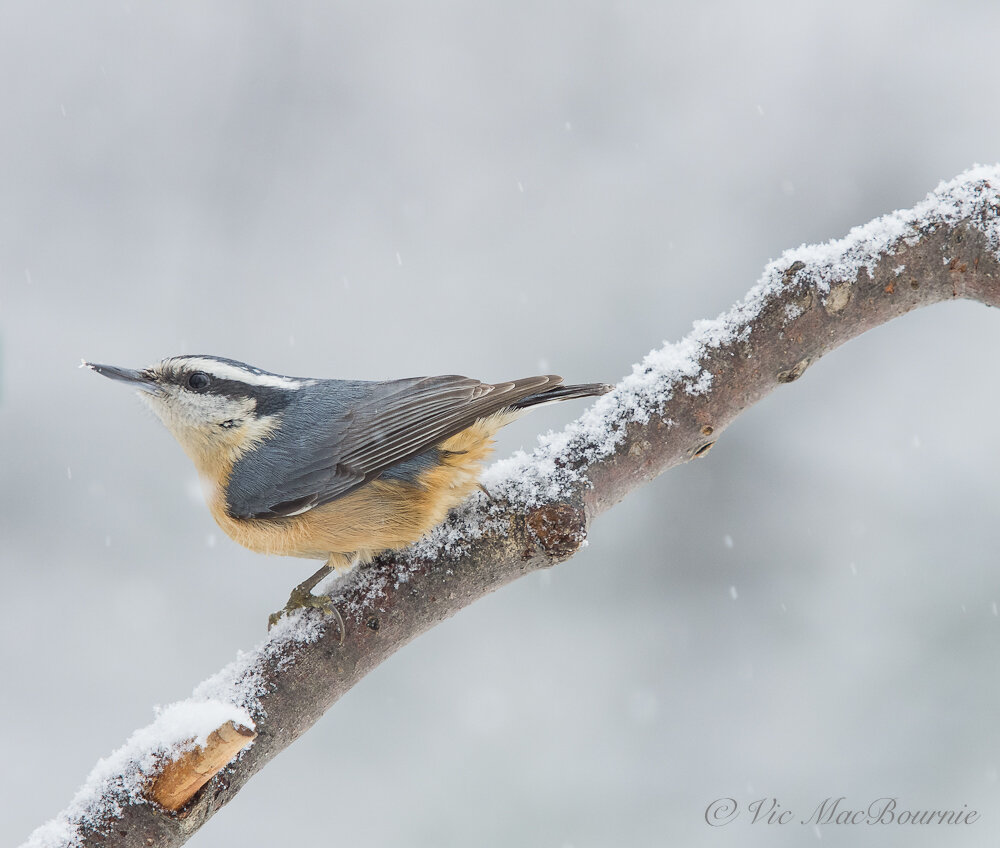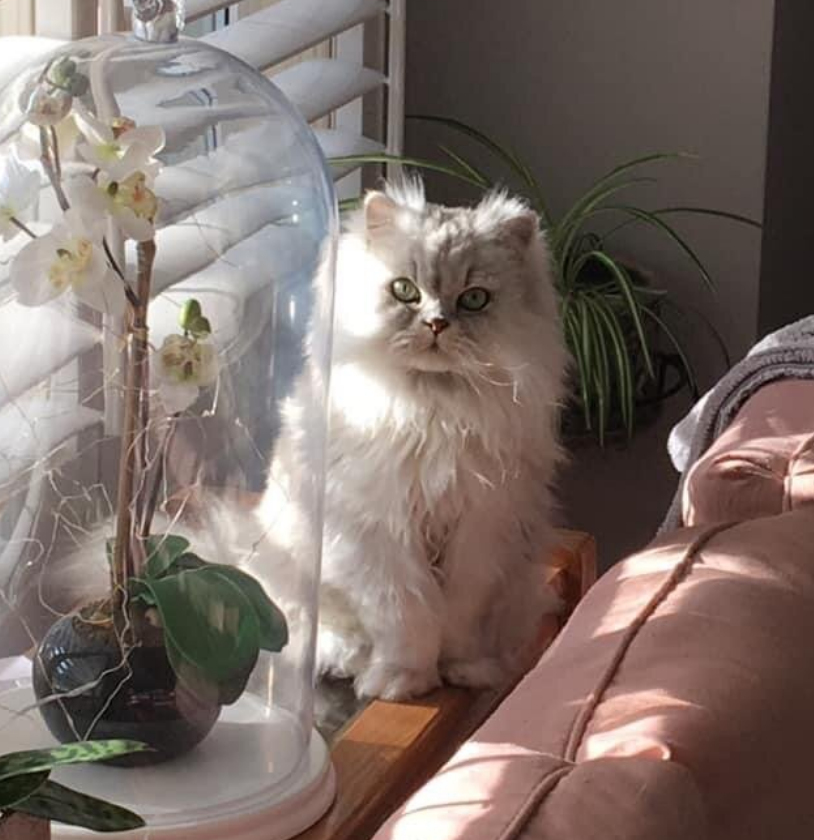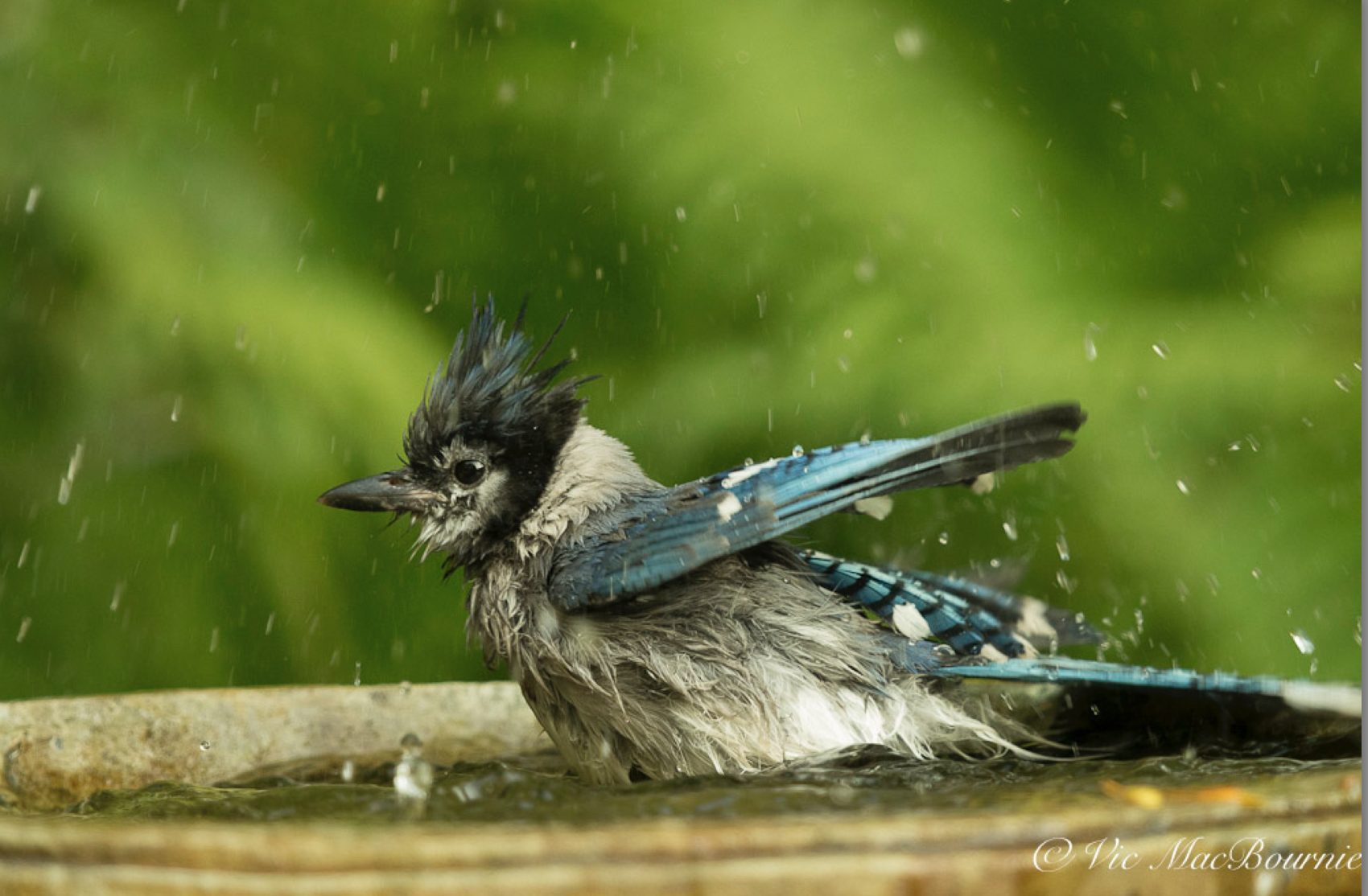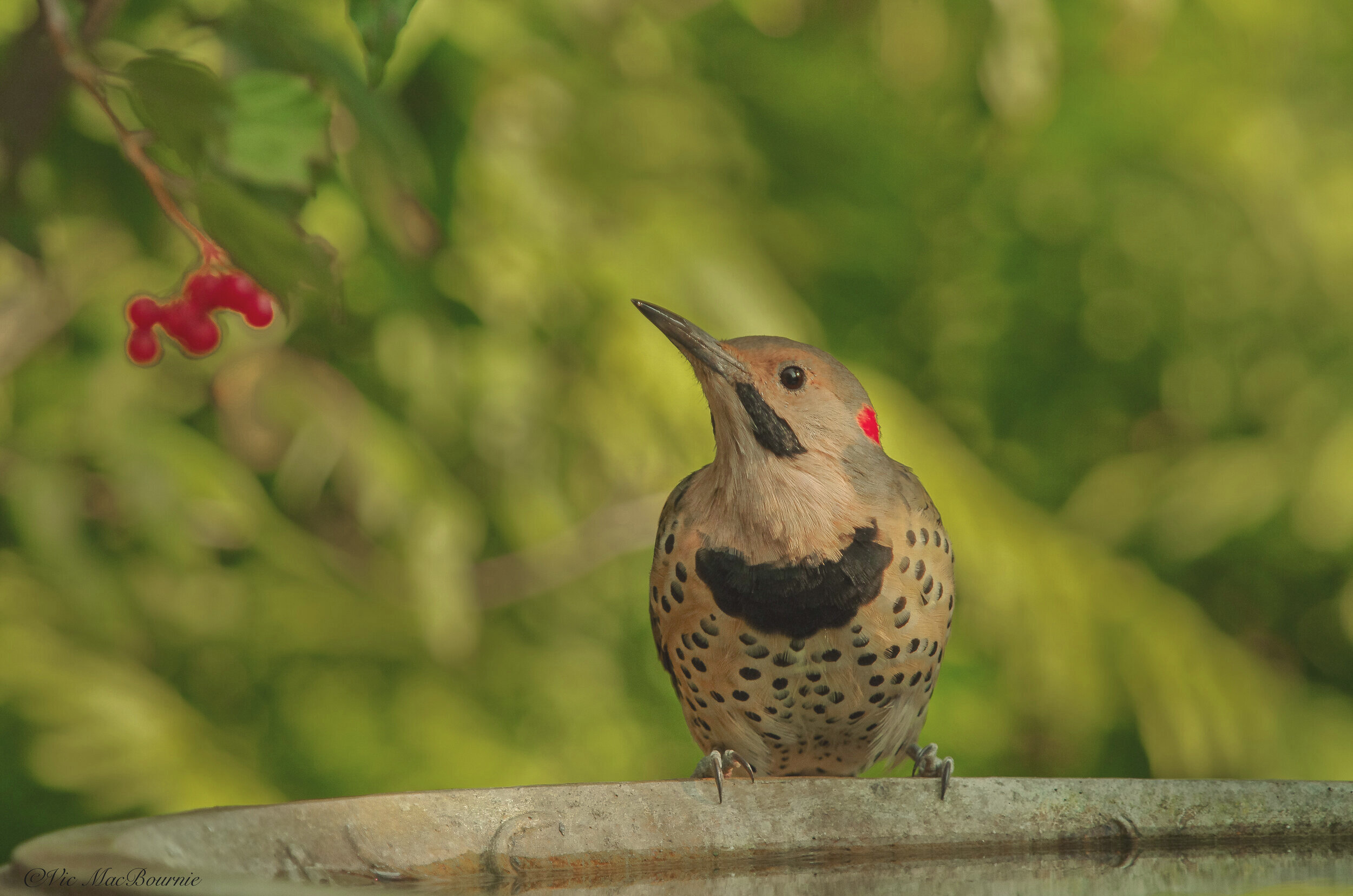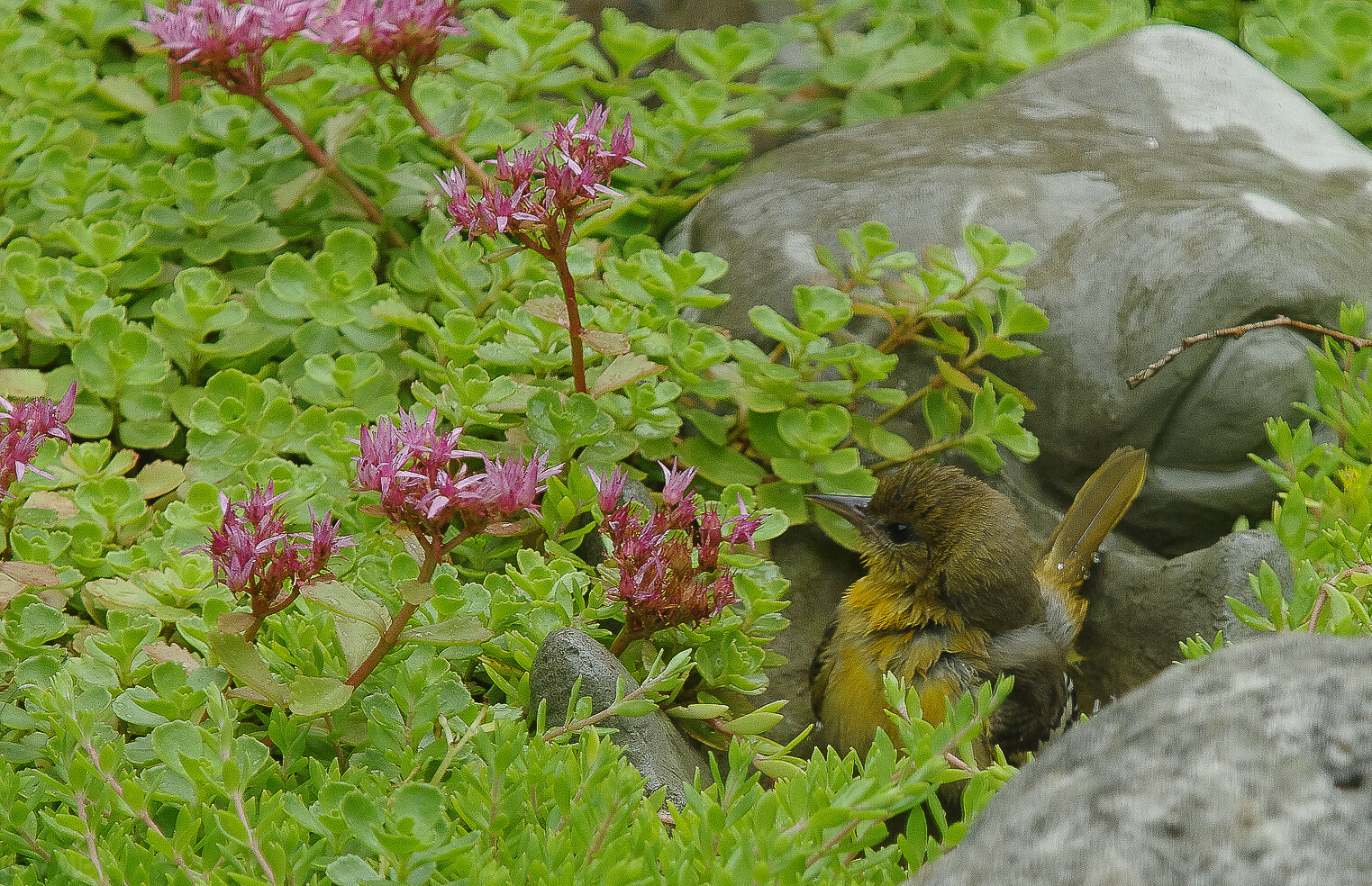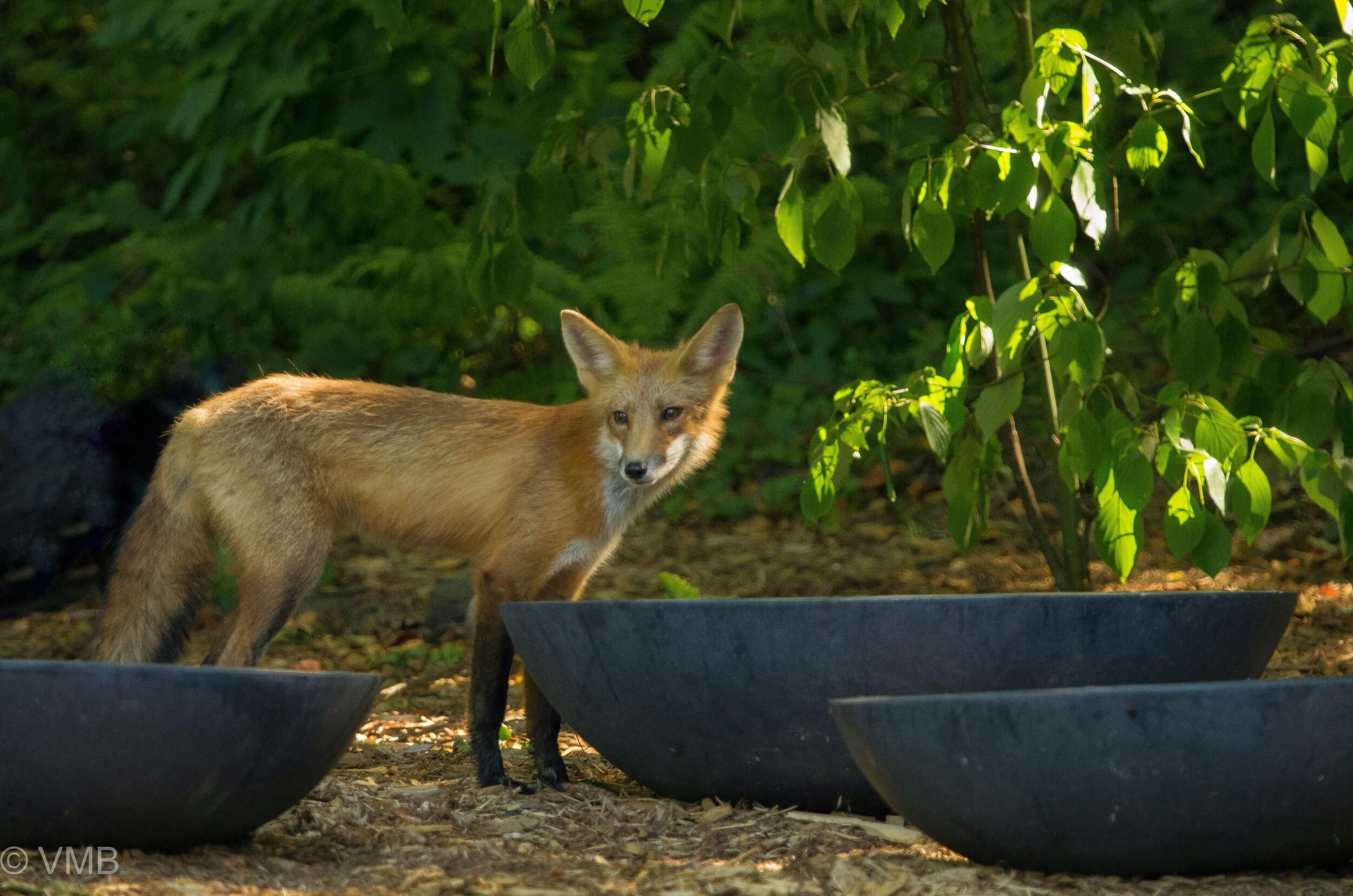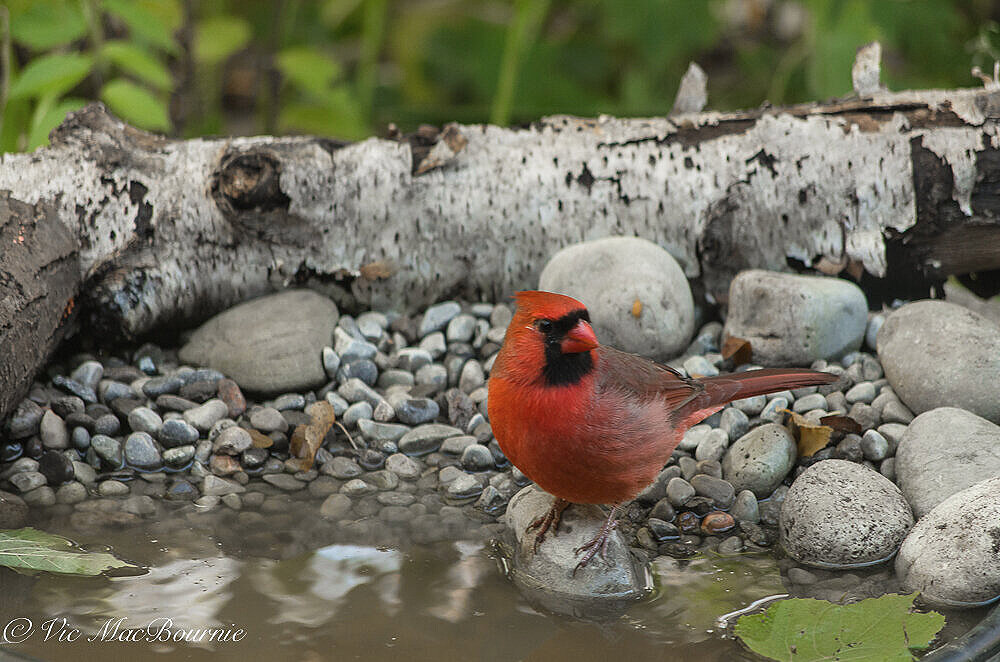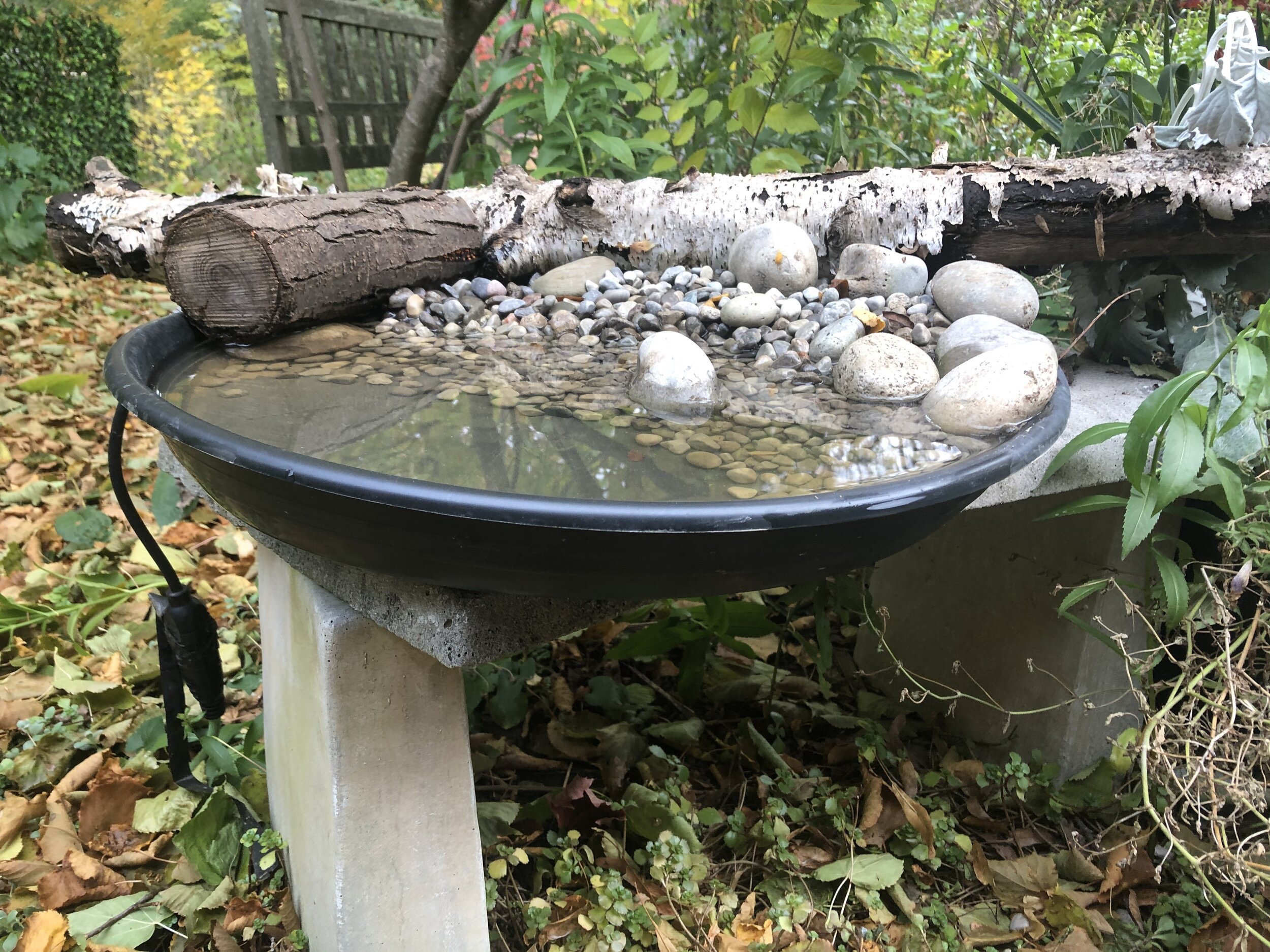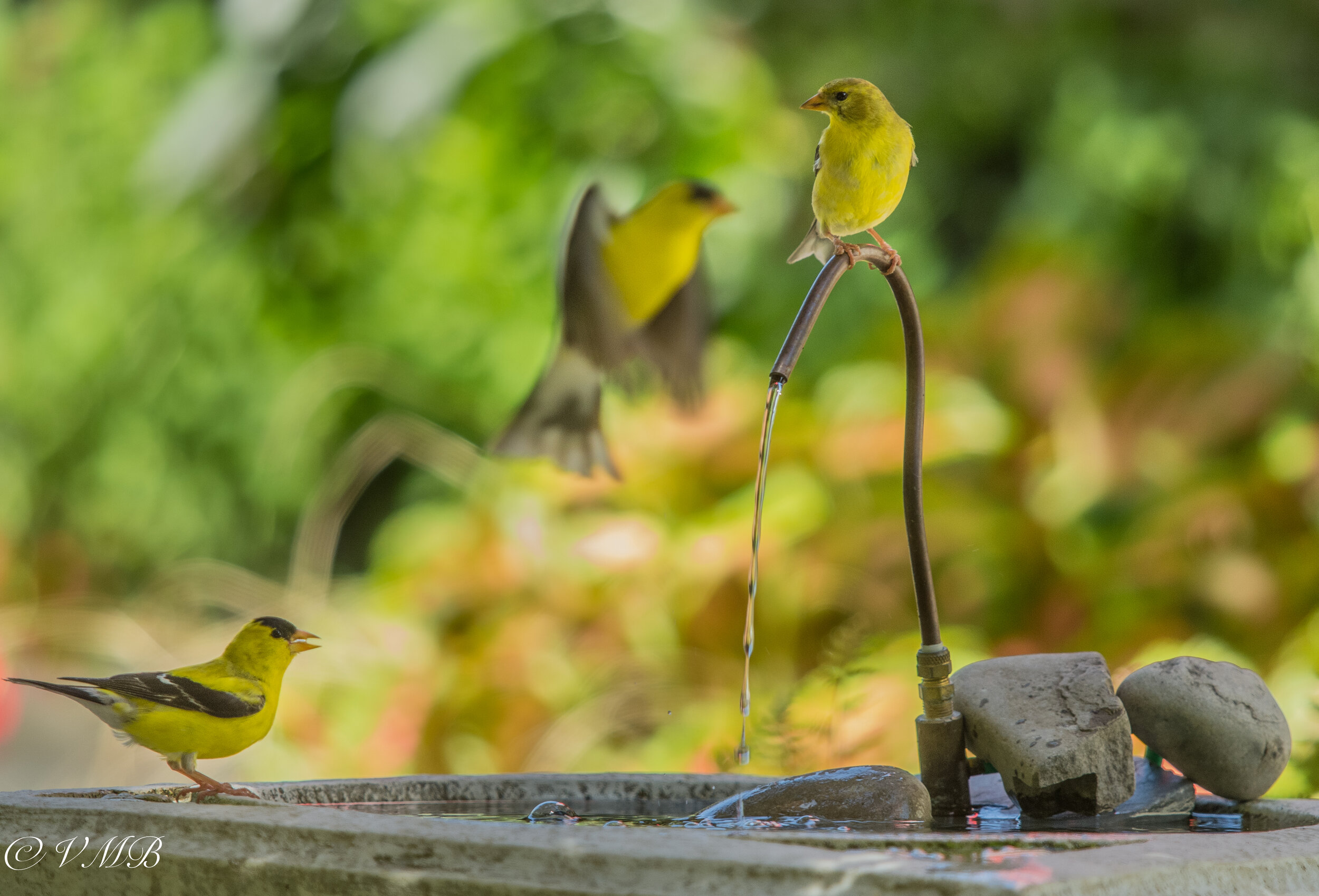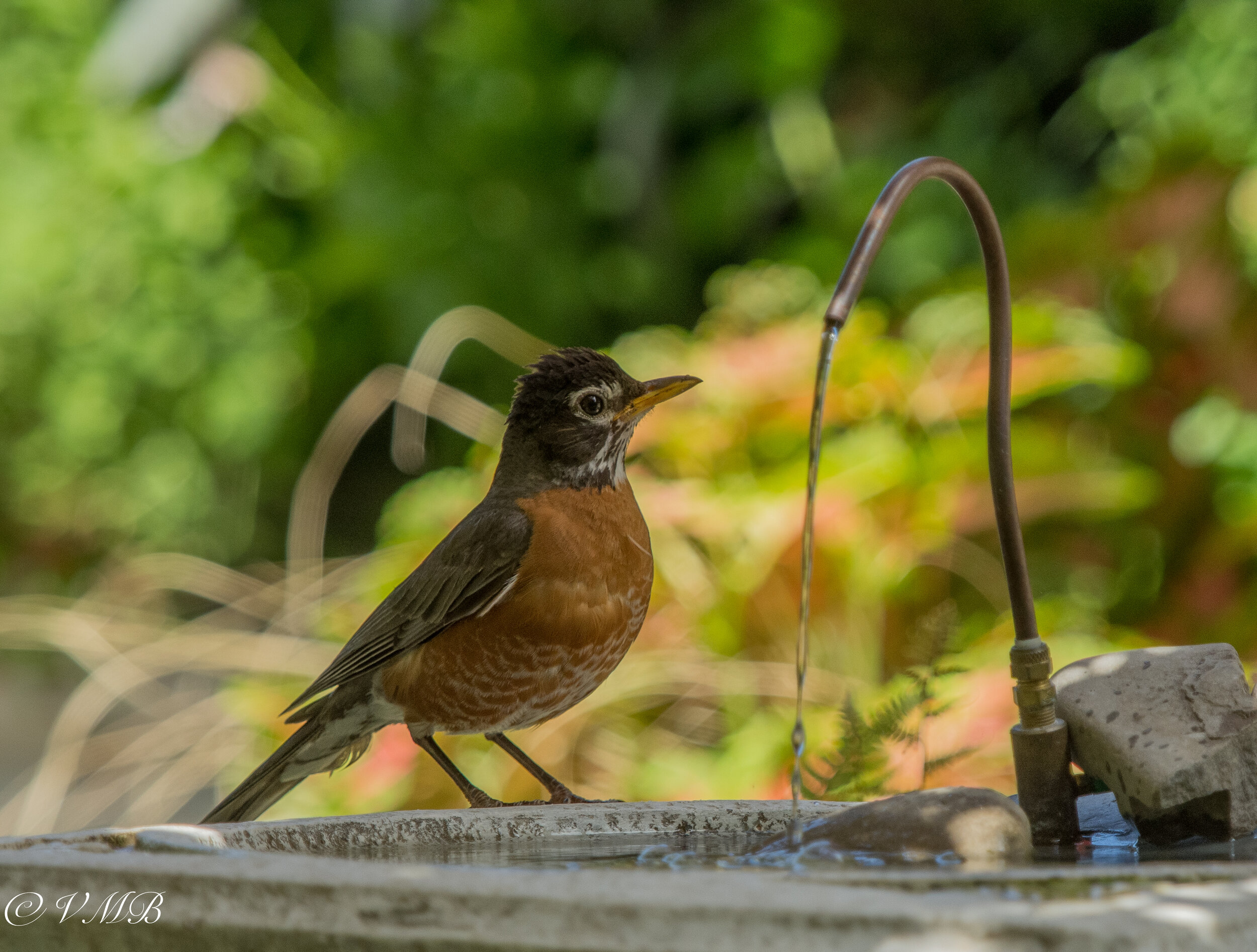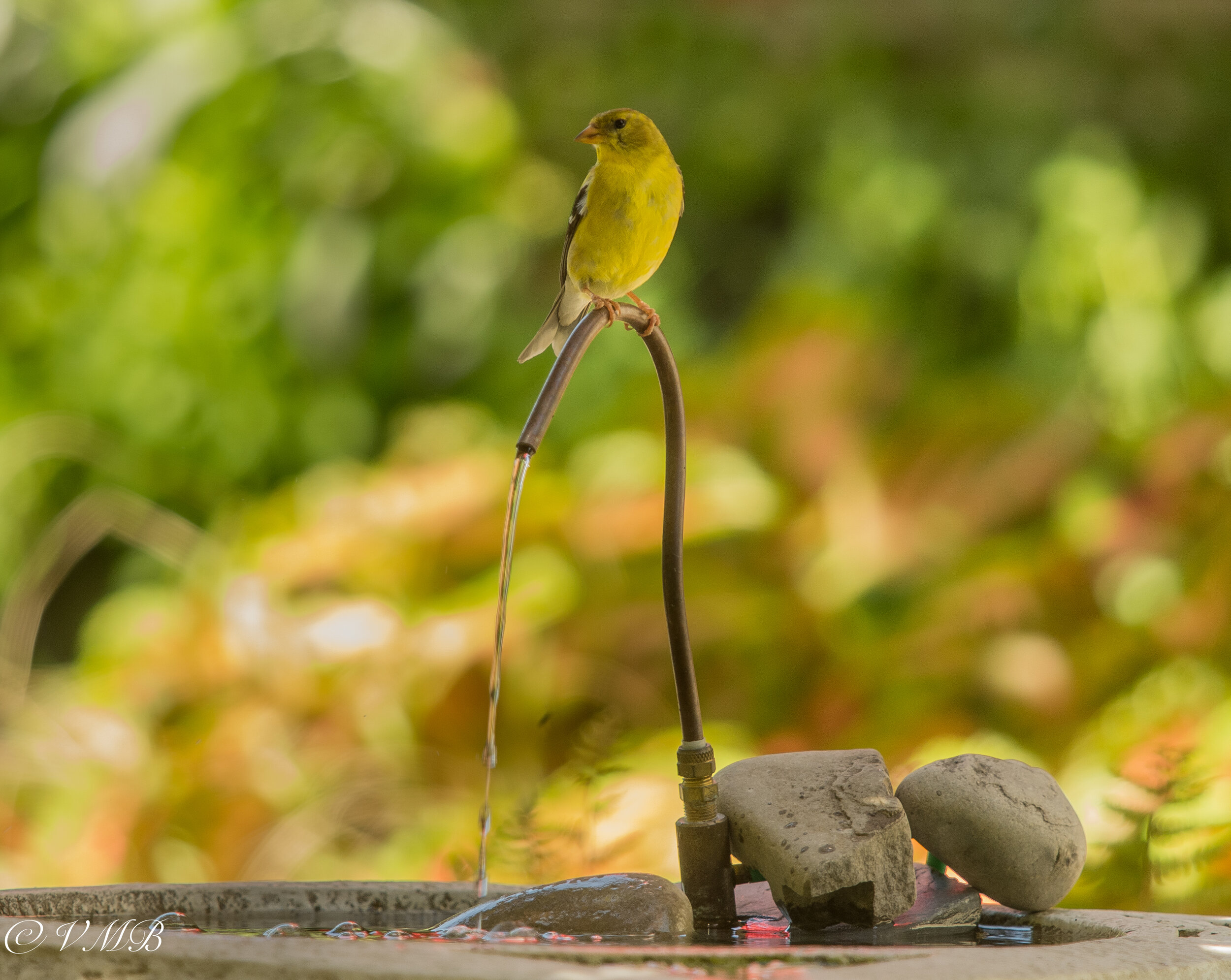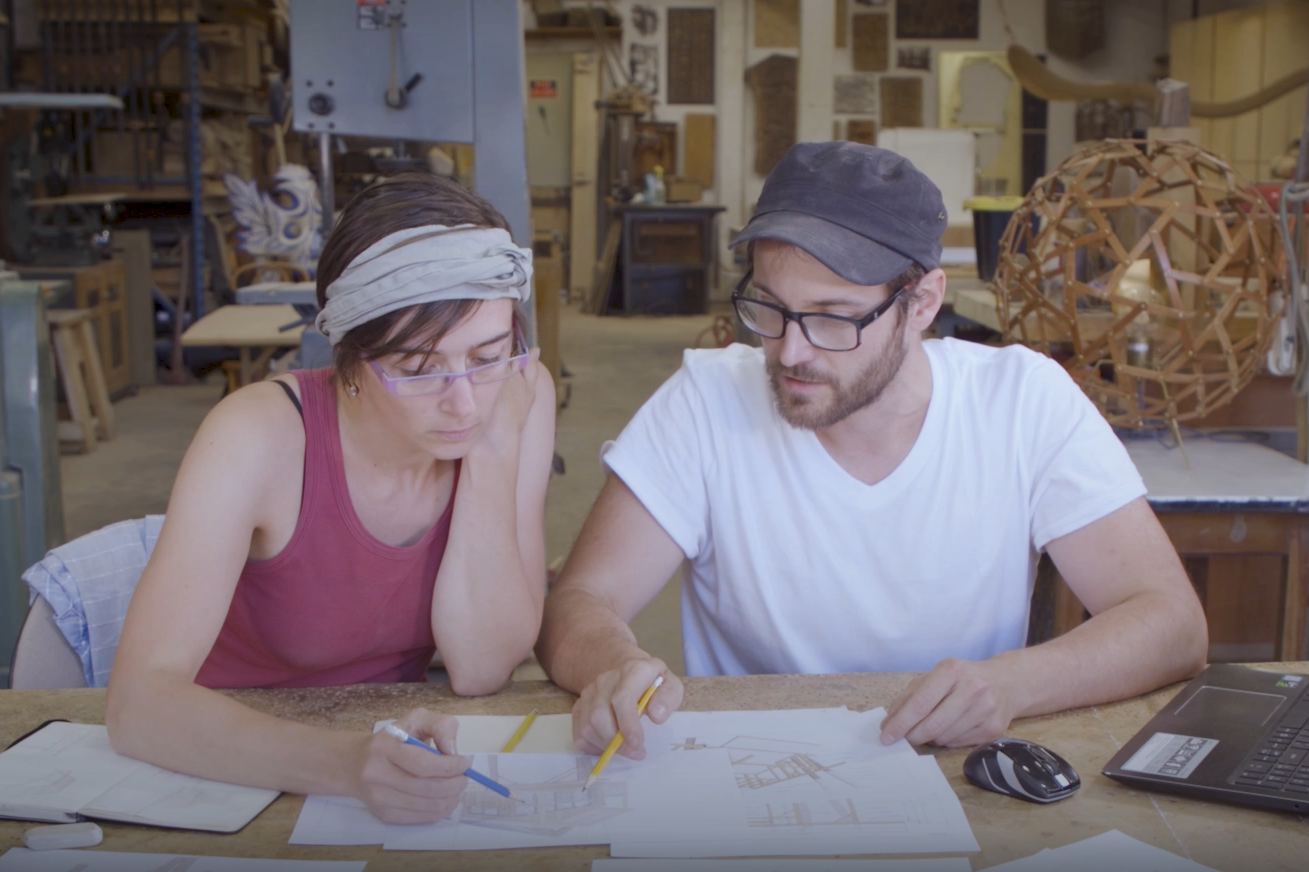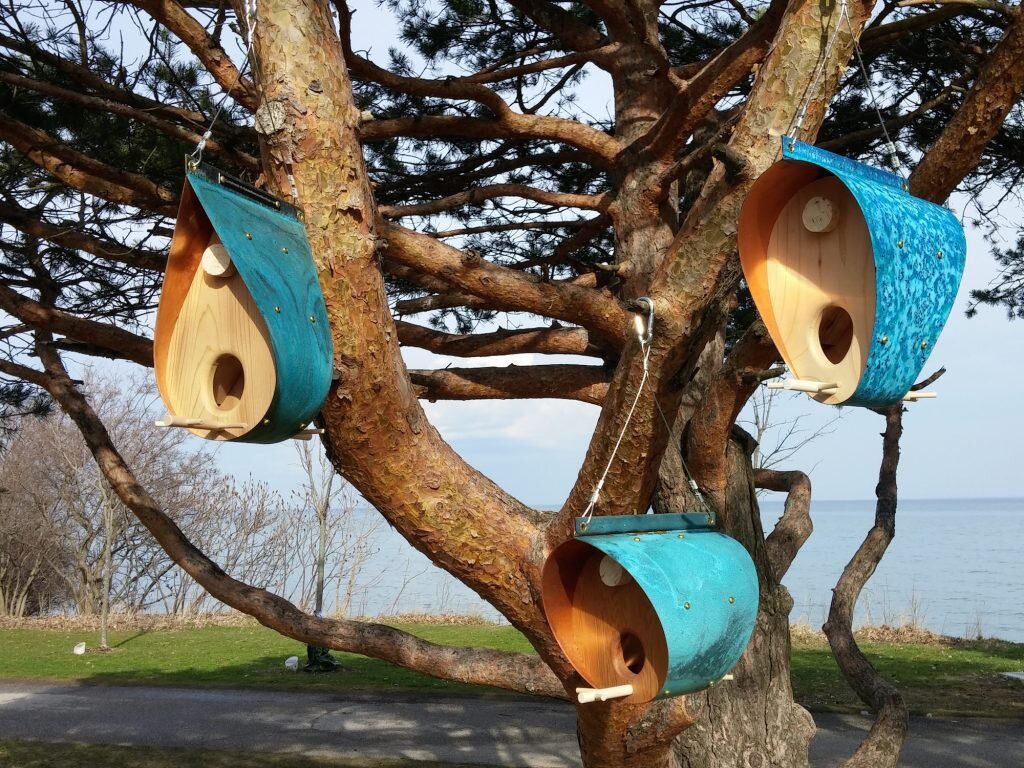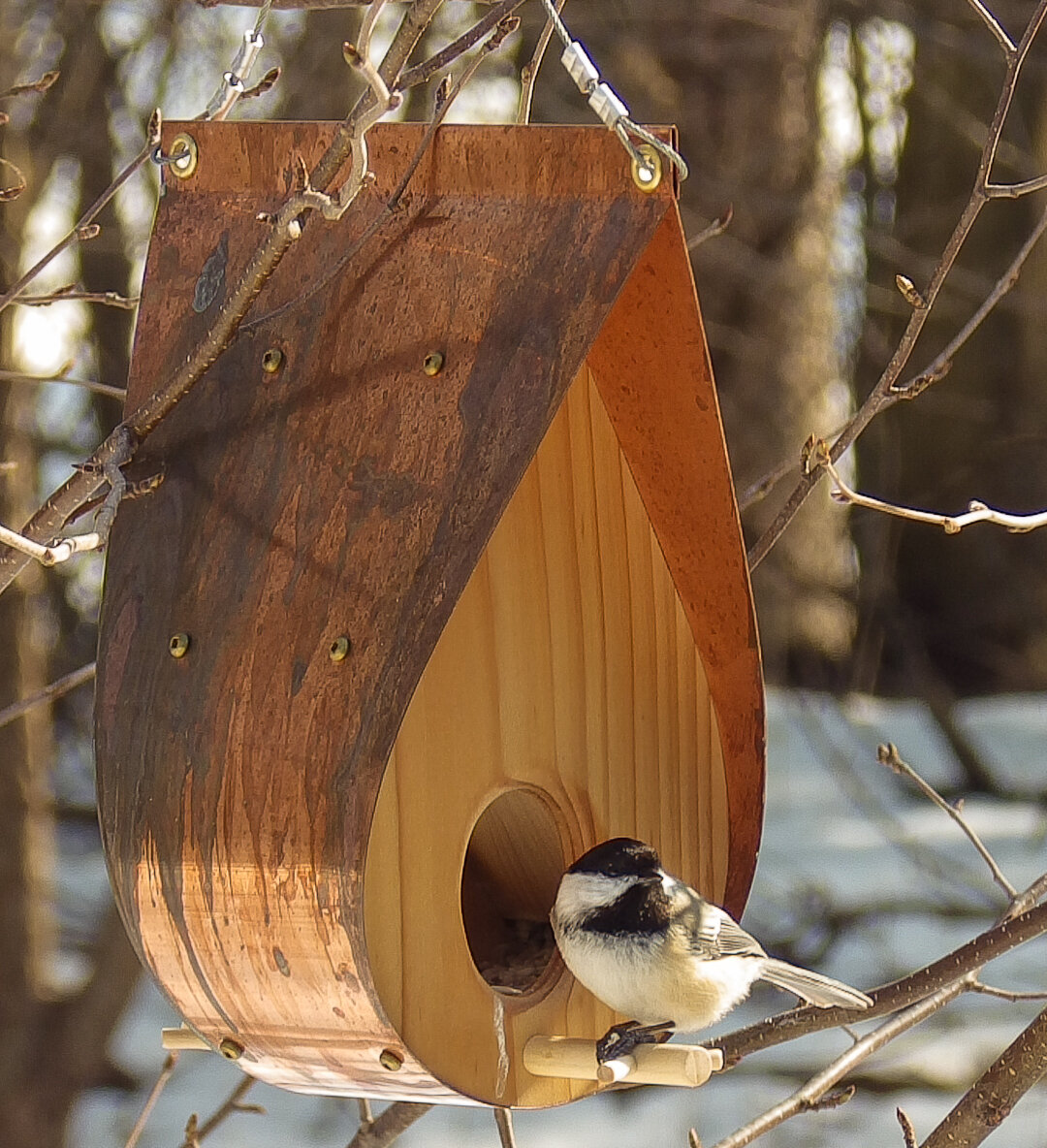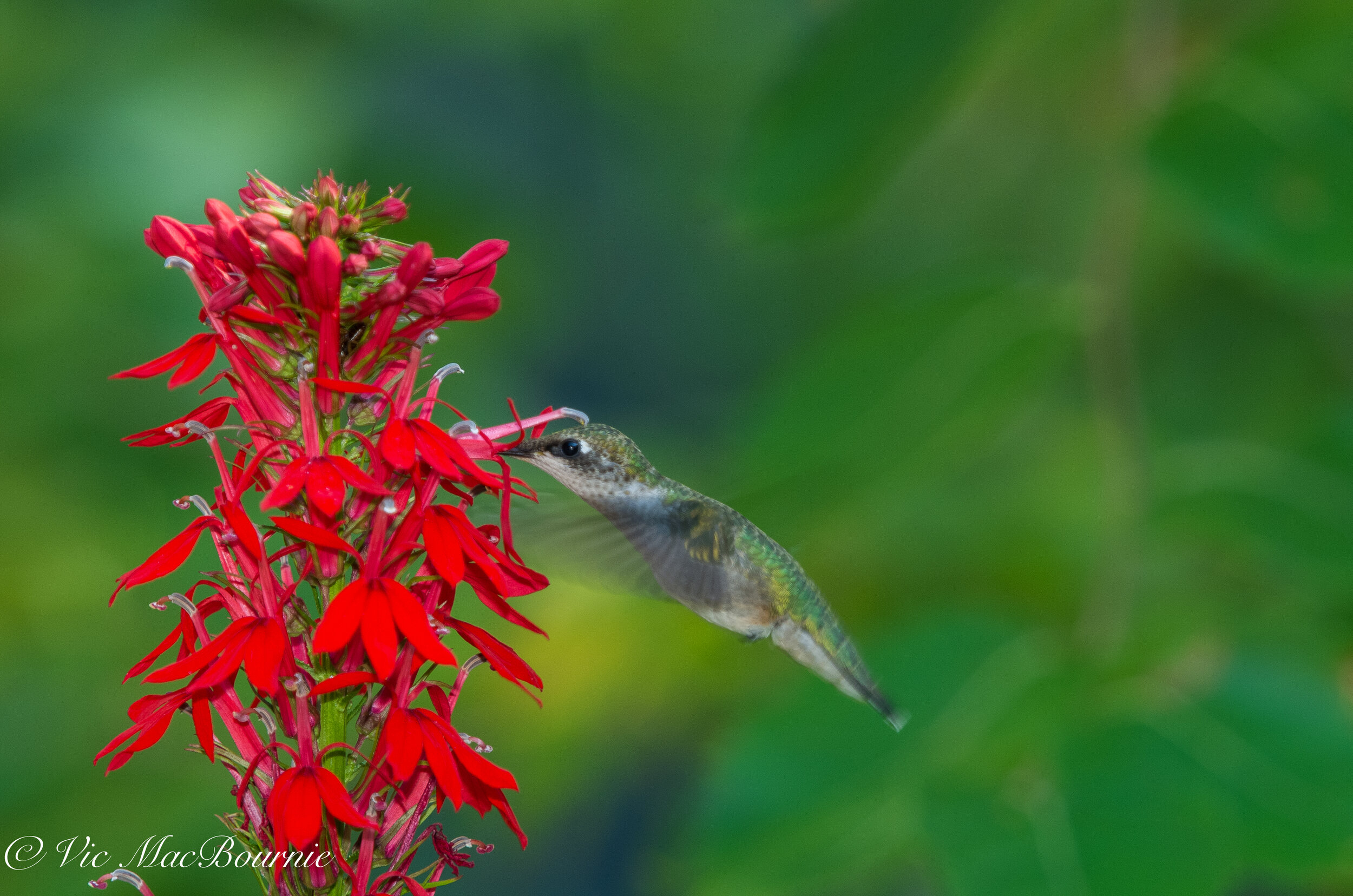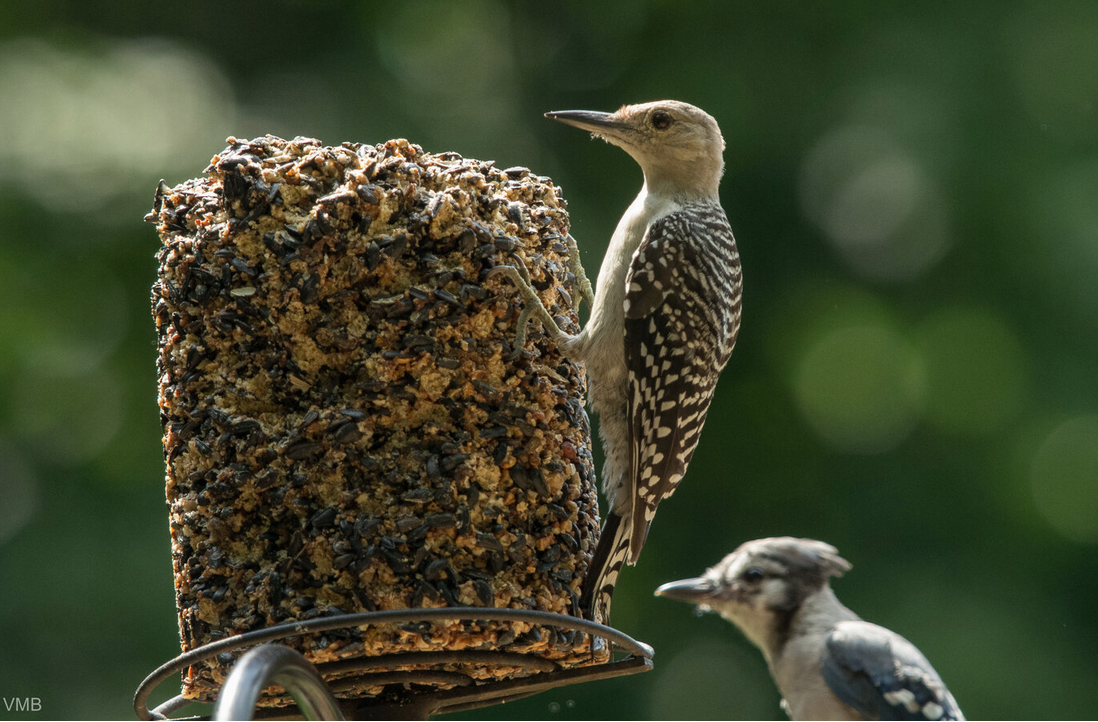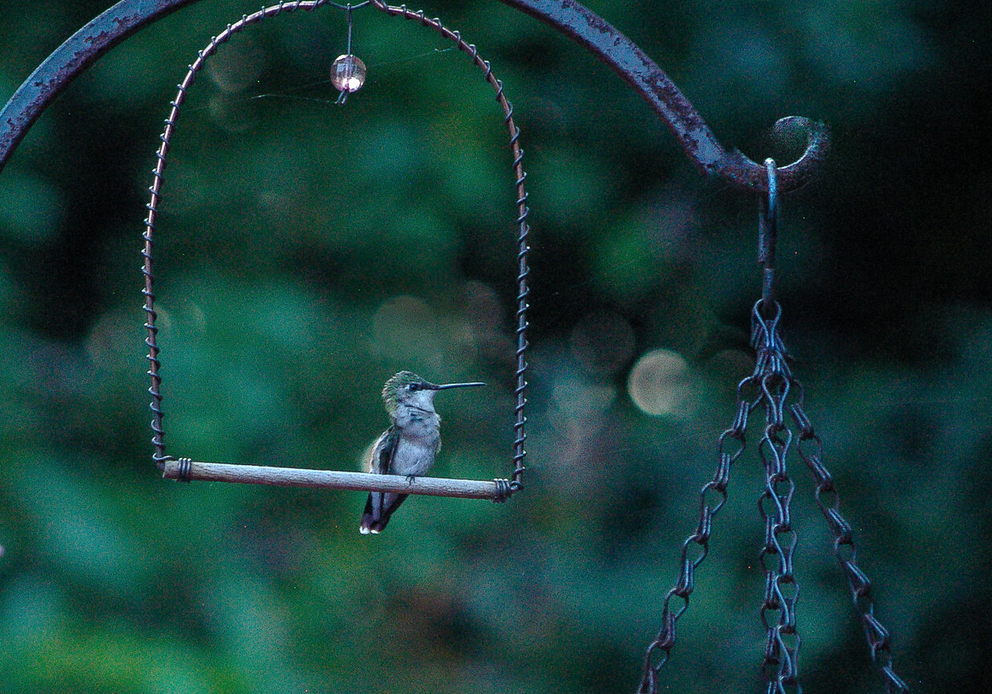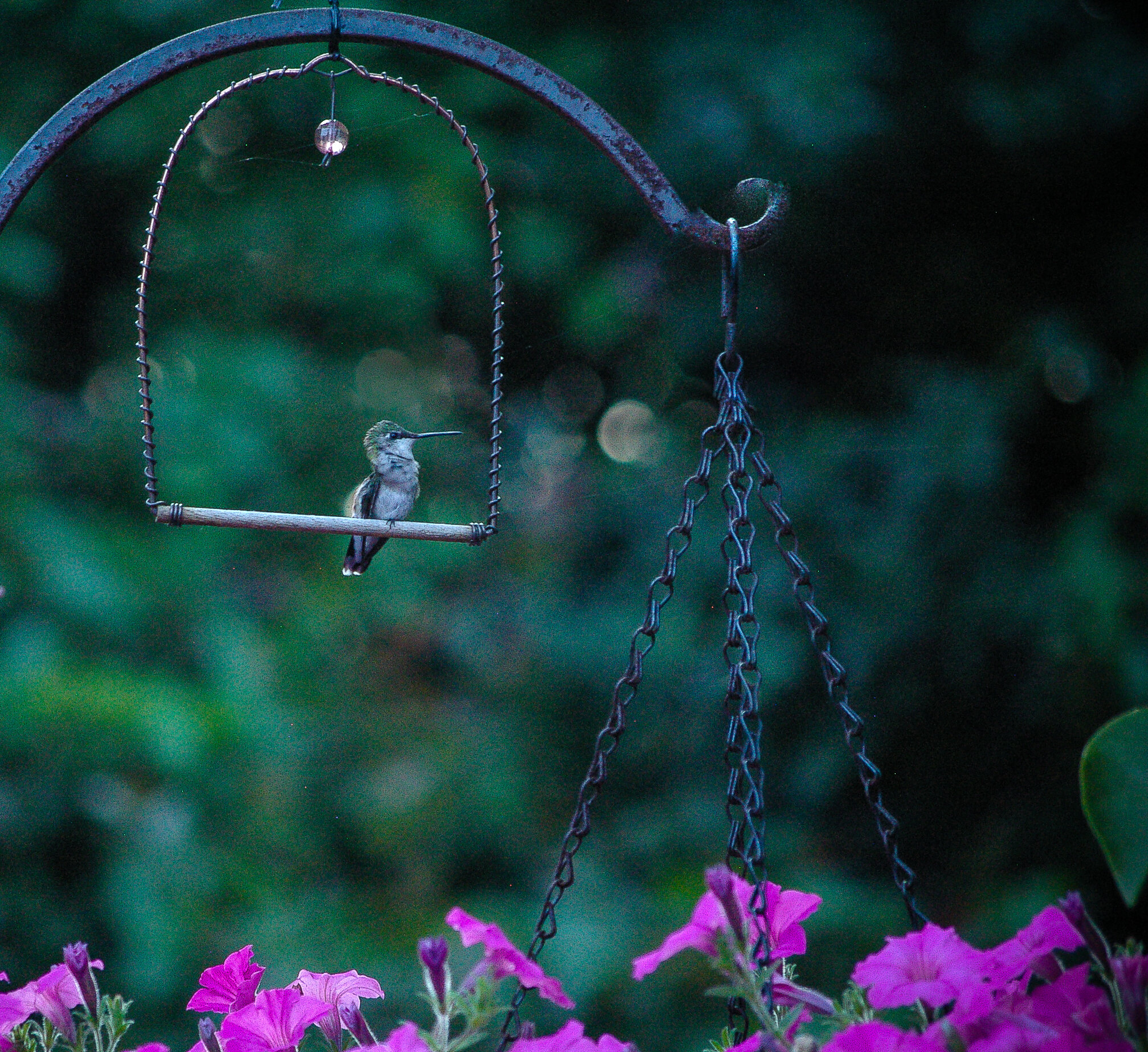How to attract Orioles with oranges, jelly and insects
There is something exciting about looking out the window in May and seeing a flash of bright orange in the early spring. It’s a sure sign that the Orioles are back. And it’s not too late to get the Oriole feeders set up, the oranges cut up and the Jelly mixtures in place for the flush of Orioles.
Go natural: Provide insects and berries for Orioles
I’m sitting in my home office in the middle of May with a light dusting of snow on the ground watching Baltimore Orioles working one of the orange halves I left out on the feeder for them
Last year, I remember as many as seven swarming the feeder. They were feasting on oranges and nectar from a commercial feeder that I had put out for them to catch their attention as they migrated back to their more northern summer breeding grounds here in Canada, from winters in Mexico, Central and South America.
If you want to attract Orioles and keep them around year round, you’ll have to make sure your Woodland provides them with everything they need so they decide to call it home. That includes an upper tree canopy where they often build their nests.
While I get great enjoyment from my bird feeding stations, providing natural food sources to our feathered friends is always the goal we should aspire to in our gardens. I have written a comprehensive post on feeding birds naturally. You can read about it here.
Orioles live in open woodlands particularly those with deciduous trees and lots of insects.
Oranges will go a long way to entice Orioles to visit your yard in spring, but grape jelly, nectar (in the same 4 to 1 ratio of water and sugar used to attract hummingbirds) provided in commercial feeders and berries in your garden from native trees and shrubs will help to convince the birds to stay around all summer. Don’t forget to provide an abundance of insects, including meal worms, which is the main food of Orioles when feeding their nestlings and throughout the remainder of the summer.
A male oriole works an orange half on the top of an Oriole feeder filled with the same sugar water mixture used for hummingbird feeders.
Here in Southern Ontario and Eastern United States we are limited to the Baltimore and orchard orioles. There are actually nine orioles throughout the United States, but only five are common.
The Bullock’s is found throughout Western Canada and the United States.
Once you’ve got them, and providing you give them the requirements they need, they often return year after year to raise their young.
More on what are the best Oriole feeders here.
Spring migration troubles 2021
Of Note: In the spring of 2021 many homeowners who normally have had Baltimore Orioles in their gardens are reporting that the birds either did not show up or appeared for only a day or two and moved on never to be seen again. I usually have a large number of orioles in the garden throughout the summer raising their young. This year, although a few passed through, none stayed around for more than a day or two. I have seen similar reports of decreases in Baltimore Oriole numbers throughout southern Ontario into northeastern U.S.
There appears to be no obvious reason for this concerning turn of events. A late cold spell that ripped through the Great Lakes area right around migration time brought freezing temperatures, including heavy snow, which may have resulted in fewer birds surviving migration or more birds choosing to nest further south. I will try to update this page if there is any more news on the plight of the Orioles.
A young Oriole enjoys a bath in one of our on-ground water sources that happens to be a concrete antler belonging to our concrete moose named Bruce (as in Springsteen) the moose.
It wasn’t too long ago when our Woodland garden was completely devoid of Orioles. Not that they weren’t around. People regularly talked about seeing them in the Conservation area surrounding us. I just never saw them in my garden.
Then I got serious about enticing these beautifully coloured birds into our garden.
Oriole nests are elaborate sac-shaped works of art
Now, they are not only here regularly in the spring and throughout the summer, a pair have even nested in a large maple at the front of our property. I don’t always find their nests, but I often see the young birds with their parents.
Orioles can take up to 12 days to build their elaborate, pendulous sac-shaped nests on the ends of branches in tall trees often in more open areas. Their nests are unique when it comes to North American birds’ nests.
In spring, the female oriole build’s her nest with thin, intertwined fibers that form what might seem like a delicate pouch but, in fact, can hold up to seven eggs.
For more information on how orioles build their nest check out audubon’s highly informative article on their site here.
Last year, a mother brought her entire brood to our on-ground water source where they had a great time splashing around in the ears of our concrete moose.
All it took to get them here originally was a couple of oranges cut in half and placed in areas where the Orioles are likely to see them. Now our neighbours have joined in to the excitement and put orange slices around their yard as well.
Once you have them, it’s time to add grape jelly to your yard. It has to be basic grape jelly, not a jam. You can buy special oriole jelly in plastic bottles at many good bird stores, but just buy a good grape jelly. I like to use Welch’s grape jelly, but any no-name jellies should be fine. Mix it with a little water and the Orioles will lap it up often choosing the jelly over the orange halves.
Orioles are attracted to the colour orange, so many of today’s feeders use the colour to catch the bird’s attention.
One trick that I like to use is after the orioles are finished with the orange half, I fill it with jelly. They seem to appreciate my effort. It’s a constant exchange of old oranges with new ones, and filling the spent oranges with grape jelly.
Five cool facts about orioles
• Orioles are in the same family as blackbirds and meadowlarks and are most often seen perched at the tops of trees or flitting through the upper foliage looking for insects.
• Their chatter is quite distinctive as is their call. Once you have heard it, you are unlikely to forget it.
• Watch your peas. Orioles enjoy fresh or frozen or dried peas
• Orioles live up to 11 years in the wild and longer in captivity.
• Female orioles become a deeper orange every time they molt. Older females can be almost as bright as their male counterparts
• Orioles got their names from the black and orange of Lord Baltimore’s family crest, which is similar to the family’s crest
• the Baltimore oriole is Maryland’s state bird
• Orioles have distinct alarm calls to warn of predators, but will not hesitate to mob and harass predators that threaten or come near nests.
Oriole feeders have come a long way
Many modern feeders will provide areas to mount oranges as well as cavities to put the jelly into. Some feeders also offer the Orioles several choices, including jelly, orange halves and nectar.
Some, such as the Birds Choice Flower Oriole Bird Feeder include a reservoir to hold grape jelly as well as places to mount orange halves. Look for feeders that also provide perches for several of the birds to comfortably and safely perch while they are eating. It’s not uncommon to have several at your feeders at once.
The nectar that is used for orioles is the same as the nectar used for hummingbirds. It should be made the same way – 4 parts of water to one part of sugar.
I like to boil my water first and then measure out the 4:1 ratio. The boiling water helps to dissolve the sugar more perfectly and seems to keep my feeders’ nectar clear longer. Remember to let it cool to room temperature before filling your nectar feeders.
Don’t be surprised if the orioles start to feed from your hummingbird feeders. They are a regular at my feeders, even when they struggle to fit on them properly.
In saying that, however, it’s not uncommon for our hummingbirds to drink from the oriole feeder.
Orioles love moving water
Don’t underestimate the value of moving water. Although orioles get much of their water needs filled by nectar from our feeders and plants, water still plays an important part in attracting these beautiful birds. They are especially attracted to the sight and sound of moving water, whether it’s a fountain, a dripper or a bubbler. I wrote a full article about converting a dripper into a solar fountain. You can read it here.
Five of a total of seven Orioles pictured here taking advantage of our various feeders that included orange halves, home-made jelly feeders and a nectar feeder.
In summer meal worms are an excellent choice for Orioles
Finally, once you have attracted the Orioles, you will need to be prepared to change their diet as summer approaches. You may notice them using your orange and jelly feeders less and less. That’s when to start shifting what you are feeding them from oranges and jelly to meal worms, either live ones (which are ideal) or dried ones. It’s a good idea to rehydrate the dried meal worms with some water before putting them out in your feeders. Or, put them in a dish and add a little water to rehydrate them. This makes it easier for the birds to swallow them.
Both types are available at bird-feeding stores or through Amazon. Feeding meal worms will not only attract Orioles to your garden. They are the prime source of food for Bluebirds at a feeder as well as robins and other insect eating birds.
Special meal worm feeders are also available. Because squirrels are not interested in meal worms, these feeders can hang anywhere in the garden including from nearby tree branches.
The Baltimore Oriole spends its winters in florida and farther south in Central America. They migrate north to breed throughout the northeast United States and into southern parts of Canada.
Insects are the birds’ primary food source in summer
Although they are attracted to Oranges and jellies on their migration routes, their real food is a variety of insects.
The Orioles that visit our gardens are using the oranges and jelly as a quick burst of energy. By the summer, when they are raising their young, they spend much of their time foraging for insects to feed their babies. The parents will still come to the feeders for quick bursts of energy, but they may also almost disappear if they are not nesting nearby.
Besides mealworms, Orioles will also eat wasps and other insects. It is vital to avoid using pesticides in the garden to ensure a large supply of insects for these birds. During the summer, when orioles are feeding their young, insects may provide up to 90 per cent of an oriole’s diet.
Native shrubs and bushes that produce an abundance of berries are excellent food sources for these birds. Consider planting elderberries, blueberries, blackberries, serviceberries and raspberries just to name a few. I have written an entire article about the importance of serviceberries in our wildlife gardens. You can read it here.
Although oranges are their favourite fruit, they will also eat apple, peaches, bananas and berries.
Providing them with special suet mixes that include fruit pieces and berries is a good source of high energy for them.
Plant bright, but dark-coloured fruits such as mulberries, cherries and purple grapes as well as raspberries. They also like flowers that produce high quantities of nectar including vines such as trumpet vines.
As an Amazon Associate I earn from qualifying purchases. This page contains affiliate links. If you purchase a product through one of them, I will receive a commission (at no additional cost to you) I only endorse products I have either used, have complete confidence in, or have experience with the manufacturer. Thank you for your support.
How to attract indigo buntings to your backyard
Attracting Indigo Buntings and other insect-eating birds is never easy. Here are a few tips to help you create a more diverse variety of birds in your backyard.
Attracting Indigo Buntings and other insect-eating birds can be difficult
Indigo Buntings have always been one of my favourite birds, but attracting them to our backyards is not always easy.
I am lucky enough to have indigo buntings coming to our feeder several times a day. And, they are going to one very specific feeder that I have made sure to keep filled with its favourite foods.
Attract Indigo Buntings with natural food such as insects
These birds of the open woodlands will come to specific seeds in your feeder, especially during migration, but they are among the many birds we may see in our backyards that largely depend on insects, spiders, grasshoppers, aphids, beetles, cicadas and caterpillars as their main source of food during the spring and summer months.
While I get great enjoyment from my bird feeding stations, providing natural food sources to our feathered friends is always the goal we should aspire to in our gardens. I have written a comprehensive post on feeding birds naturally. You can read about it here.
So, how do we attract Indigo Buntings and other insect-eating birds, including blue birds, wrens and warblers to our yards and keep them coming back, or, better yet, convince them to call our yard their home?
A male Indigo Bunting sits among the flowers of a crabapple in spring.
To successfully attract Indigo Buntings and other primarily insect-eating birds to our yards depends on a multi-faceted approach that begins with providing them with the food they prefer at our feeders – primarily small seeds such as thistle or nyjer, and white proso millet. Sunflower chips – the type available in no-mess blends – can also attract these beautiful birds. A high quality finch mix which includes many of these favourite seeds and, of course, live or dried meal worms will keep them interested in what our feeders are providing.
Use white proso millet and bark butter to attract Indigo Buntings
In addition, I have had success with Wild Birds Unlimited soft suet nuggets known as “Bark Butter Bits” in attracting Indigo Buntings and other insect eaters.
I have found that white proso millet mixed with dried meal worms keeps indigo buntings coming back day after day.
Indigo Buntings are among the most shy birds in my garden. Even the slightest movement from a distance can send them flying off into the nearby cover of our large crabapple trees. Providing several feeding stations or, even better, a caged feeder helps to give them a better sense of security in the commotion that so often surrounds a large feeding station.
Once the feeder foods are in place, ensure there is an abundance of water in the yard and try to provide it in many different forms – from on-ground sources, to hanging bird baths in trees and other quiet areas of the garden, as well as traditional bird baths. (See my earlier story on providing water sources here.)
Once these two key ingredients (food and water) are in place, we need to focus on providing the birds with their natural food sources which includes an abundance of insects as well as berries.
Berries as a key food source: Plant blueberries and serviceberries
Indigo Buntings are drawn to many types of berries including blueberries, strawberries, serviceberries blackberries and elderberries, just to name a few. Many of these fruits could be purchased from local grocery stores and provided at feeders, but why not start now to ensure at least some of these berries are being provided naturally in our gardens?
By planting a few of these berry producers and leaving an area of your garden to go wild with wild strawberry, raspberries etc you will provide perfect habitat for a host of birds that like to dine on berries. Indigo buntings will often forage in these wild areas for seeds, bugs and berries. They can be seen flitting about through the grasses or in shrubs.
In spring, they will often even eat the buds of their favourite trees and shrubs. There is no questions that these “wild” areas provide excellent habitat for a host of insects and keep the birds returning to that corner of your yard.
These berry producers, especially serviceberries, are excellent additions to your woodland/wildlife garden. (See my earlier post on serviceberries here.)
Blueberry plants are also an easy introduction to the garden. You can grow them in containers where you can more easily control the PH levels. (Blueberries like a slightly acid soil) I have two blueberries growing in a large container and another Proven Winners’ hybrid plant that I planted this year in a raised container.
Chances are you will have to work hard to get any for yourself once the birds and garden critters have had their fill, but that’s okay. If you can’t bear the idea of giving up all your favourite fruit to the birds, cover them with a cloche to save some for yourself and offer the remainder to the birds. The critters got all the berries last year. This year, I am determined to get at least a few for myself.
Okay, so we have the feeders set up, an abundance and variety of water sources and berry producing trees and shrubs planted in the garden.
That’s an excellent start and one where many gardeners will be satisfied, but not us. Woodland/wildlife gardeners who really want to attract Indigo Buntings and other insect-eating birds to their backyards will want to take the extra steps to not only attract the birds but the insects and caterpillars that will really bring these birds to our gardens.
Immature Indigo Bunting showing its lack of complete colouring.
Insects: Provide the key ingredient to success
Now let’s talk about those insects that Indigo Buntings are so dependent on for their survival.
It goes without saying that the use of indiscriminate insecticides is not going to result in success. In fact, every effort should be made to create a pesticide-free habitat for the wildlife in your yard.
It never hurts to put up a sign in your front garden advertising that your property is a pesticide-free zone. Unfortunately, we cannot control what our neighbours do but, let’s hope they will follow our lead and reduce or eliminate the insecticides they choose to use on their properties.
Eliminating pesticides is an excellent start, but if you live in a typical suburban lot you may need to take extra steps to make your property insect-friendly.
Here are a few suggestions to increase the number of insects on your property with links to earlier posts on Ferns & Feathers.
Plant an Oak tree: If at all possible, look for an area in your yard where you can plant an oak tree. Studies show that oak trees support the greatest number of insects and caterpillars of all the trees in the forest. Without going into great detail, there is no better tree in the landscape to support a healthy insect and population. In fact, Doug Tallamy in his book Bringing Nature Home states that a “single white oak tree can provide food and shelter for as many as 22 species of tiny leaf-tying and leaf folding caterpillars.”
Go here to read my posts on oak trees.
• What tree should I plant in my yard.
• Columnar oak is perfect for small yards.
And that is just a tiny fraction of the fauna that depend on a single oak tree. In fact, the mighty oak supports 534 species of fauna, more than any other tree we can plant in our gardens. (See my earlier post here on the importance of oak trees in our landscapes.)
Create a brushpile: Pick a corner of the yard and begin adding sticks, branches and other woody cuttings from the garden to the pile. Maybe some old grasses or last year’s leaves could also find a home in the corner. You are not looking to make a compost pile (although an active compost pile is good too), you are mostly just making a place where insects can gather preferably out of the hot sun. Over time the branches will break down and create good habitat for insects and other small fauna. We have two such areas: one is a massive pile in one corner of the yard that gets added to every year. Some might describe it as an open compost pile but I never turn it, have not removed any “compost” and top it with only garden material from branches to cut grasses, leaves and old container plantings in the fall. The other is the result of pruning two large trees, where I asked the tree company to just leave the branches on the ground. This is an open brush pile and favourite playground for the chipmunks and red squirrels in our yard.
For my earlier post on building a brushpile go here.
Leave some fruit to rot: This is a great way to attract fruit flies. I use a shallow hanging bird bath which is a perfect place to put pieces of apple, watermelon, oranges for the Orioles, bananas etc. These attract all kinds of insects as well as butterflies etc. The fruits get moved to the open compost area once they begin to over ripen.
Leave your leaves in the fall: This is the singularly most important step you can take to encourage an abundance of insect life in your woodland garden. It is vital for insectivorous birds during the extremes in winter when food is scarce and in spring, when migrating birds are returning craving good sources of protein. Despite living in an area surrounded by forested Conservation lands, most of my neighbours are obsessive about picking up every last leaf on their grass and in their yards. Bags and bags of leaves are put out every fall through spring to ensure not a single leaf remains on their properties. It reminds me of how important leaving the leaves on the ground is when I look out the window in late fall, winter or early spring and see a host of birds, rummaging through the leaves looking for insects and larvae winter, spring, summer and fall. (See earlier article here.)
Mud puddles or shallow spots: Many insects, including butterflies can be drawn to shallow mud puddles where they drink and obtain much-needed minerals from the soil.
Backgrounder on the Indigo Bunting
These migratory birds (genus passerina cyanea) spend the winter primarily throughout Central America but breed throughout the eastern United States up into southern Ontario around the Great Lakes and southern parts of Quebec west to Manitoba. An interesting fact about these birds is that they migrate at night, using stars as their guiding lights.
They can often be spotted on the edge of woodlands and along rural roadways where they like to perch on telephone lines and tall trees and share their song for hours on end.
The indigo-blue males, with their striking blue heads that softens to a more cerulean colour on the body, pronounce their presence with joyful songs through the late spring and summer.
It may come as a surprise, since it is their striking colour that sets them apart in the bird world, that their jewel-like colour does not actually come from blue pigment in their feathers, but, instead, from microscopic structures in the feathers that refract and actually reflect blue light.
The males sport short conical bills that are dark on the top and a silvery-gray on the bottom.
Females, not unlike many other bird species such as cardinals and orioles, are much more subdued in colour with shades of brown and beige with hints of blue on her wings or rump.
Indigo Buntings like to nest in shrubby areas rather than high in the treetops. this is another good reason to leave some unkept shrubby areas in a corner of your garden.
Who knows, you may be able to convince a couple to nest in your yard where you can enjoy them all summer, up close and personal.
The perfect opportunity to photograph the family as they grow and prepare for their epic migration to lands far, far away.
Good luck and let me know if you have any success attracting Indigo Buntings this season.
As an affiliate marketer with Amazon or other marketing companies, I earn money from qualifying purchases.
Expert Tips for Attracting Birds to Your Backyard Fast
Attracting birds to your backyard involves providing them with a number of key elements including food, water and shelter. This guest post that Ferns & Feather participated in touches on all these elements.
This is a guest article that Ferns & Feathers participated in and that was originally composited by Mike Cahill for Redfin blog in Seattle, Washington. To check out the original post, go here.
When trying to attract birds to your home creating a habitat that serves their basic needs is essential. Food, water, and shelter are key but aren’t the only variables you need to consider. While these satisfy their physiological needs, birds also prefer a safe space where they can socialize freely. That’s why we reached out to the birdwatching experts from Vancouver to New York to provide you with a few creative ways to attract birds to your home.
Foster a bird haven
The most effective way to attract many different species of birds to your yard is to offer a wide variety of food sources including seeds (especially black oil sunflower seeds), suet, nuts, jelly, sugar water (for hummingbirds) and fruits. Also consider installing native plants, fruit-bearing trees, and shrubs in varying degrees of density in your backyard to promote an attractive, safe habitat for the birds to forage, roost and nest in. It’s also a good idea to put out a birdbath or install a small pond garden so that the birds have someplace to bathe, cool off and grab a drink, something that is particularly important during the summer months. Lastly, make sure that you clean your feeders and birdbath periodically and keep your feeders full. Following these steps, it won’t be long before your backyard will become a bird lover's paradise! - Birdwatching N.C.
It’s important to provide multiple clean water for local birds.
This spring, consider turning your backyard space into a welcoming haven for birds! The key to attracting birds to your yard is by providing for their basic needs. Growing native plants is a great way to encourage birds to settle in your yard by offering natural food sources and shelter. In addition, you can add bird feeders with a variety of food types to entice many different species. Proving a water source is another great way to attract birds because of course, they all need water! Putting a birdbath in your backyard is an easy way to provide a place that birds can drink and bathe. A couple of other important things you can do to help out our feathered friends are to avoid using pesticides and herbicides, which are harmful to birds and also to keep cats out of your yard! Have fun birding and good luck! - Meewasin
Incorporate a variety of feeders
Get some hummingbird feeders up in various parts of your garden. Hummers can be territorial so we suggest at least 2 or 3 different feeders in different corners. Keep the feeders well stocked with a 4 to 1 dissolved mix of water to sugar. Once the birds know there is a regular supply of food they'll keep coming back. Take care to clean the feeders every day or so, and replace sugar water which ferments quickly on hot days. It's not just about feeders - get some plants on the go too. Hummers love brightly colored tubular hanging flowers rich in nectar. Reds and purples are perfect, like cardinal flowers, columbines and fuchsias. - Home Happy Gringo
While I get great enjoyment from my bird feeding stations, providing natural food sources to our feathered friends is always the goal we should aspire to in our gardens. I have written a comprehensive post on feeding birds naturally. You can read about it here.
Don’t underestimate the importance of a clean water source
Our Friends know that their own yards can serve as vital mini-sanctuaries whether you live in the rural vast expanse or eastern Oregon or an urban 'jungle'. We have a few tricks for ensuring that you are supporting the birds that may find themselves in your backyard. First things first - food is not enough. Clean, freshwater is a vital and often overlooked necessity for many birds. A resident of Burns, OR and Friends of Malheur Board Member, Rick Vetter, says, "I use a combination of water, feed, and bait to attract a variety of birds to my backyard in winter." Water can be a shallow bath or bubbler and should be cleaned regularly. Rick continues, Feed consists of 2,000 lb of cracked corn and black sunflower see in several feeders supplemented with suet and a large plastic container of skippy super crunchy peanut butter with holes for wood pegs and slots for access to the peanut butter." What about the bait you ask? Well, Rick has a unique approach to that as well. " Bait consists of California quail and Eurasian collared doves eating the feed and in turn, they attract northern goshawks, Cooper’s hawks, sharp-shinned hawks, red-tailed hawks and northern harriers that feed on them. Merlins feed on the smaller birds. - Malheur National Wildlife Refuge
Try planting local natives
Firstly, I recommend planting local native plants like the Firebush (Hamelia patens). This plant is very attractive to hummingbirds and insects, therefore attracting other birds like warblers and flycatchers. Something important to keep in mind is that this plant has a tropical and subtropical distribution. Therefore it attracts birds suited for those conditions that the plant is also well adapted for. For that reason, before planting your garden or designing your landscaping, you have to investigate the local native plants in your area. Also, another helpful and easy way to attract birds in the garden, for example, is if you have old tree trunks on your property. These dead plants can provide a suitable habitat for woodpeckers, owls and in general birds that need a cavity to nest inside. - Drake Bay Birdwatching
Planning your outdoor space with bird-friendly plants that flower at different times of the year will attract a variety of birds throughout the flowering season. By planting early bloomers you will be providing a food source for early summer migrants (or straggling fall migrants) and by planting late bloomers you will be attracting birds leaving a little later (or fall migrants arriving early). And of course, you’ll be providing for your resident birds as well! To learn how to spot some of California’s most notable birds, check out our Guide to Birding. - Santa Clara Valley Open Space Authority
The most effective way to encourage a variety of birds to your yard is to plant as many native trees, shrubs and flowers as possible. These are plants that the native birds have come to know and depend on over centuries. By using more native plants in your backyard, especially those that flower profusely in spring and follow the blooms with berries, you will not only encourage birds and other fauna to visit your yard, you will also encourage them to stay in your yard and call it home. - Ferns & Feathers
Install a moving water feature
A simple, cheap, clean and effective way to attract birds to your garden is to install a moving water feature. Place a floating solar-powered water pump in the middle of your birdbath, surrounded by small rocks to keep it in place and to act as perches. Alternatively, if you want to DIY it, you can make your own "spring" out of a large plastic bucket with a lid (eg paint bucket) and a small solar-powered pump. Paint or decorate it to your taste, punch holes in the lid for the tubing and drainage back into the bucket, and place small rocks or stones on the lid to give it a more natural feel. The moving water ensures that it is oxygenated and stays clean for longer than still water, and it attracts the bird's eye more readily. - Birding in Spain
Originally published on Redfin
How to help Hummingbirds during migration
Twice a year our little hummingbirds perform a minor miracle during their migration to and from Mexico and Central America. Along the way they could really use our help. Find out how you can help them survive their arduous journey by providing nectar and insects along their route and then welcoming them back home.
How far do hummingbirds migrate
It’s hard to imagine our tiny hummingbirds embarking on a two-week journey all by themselves covering between 3,500 - 4,000 kms from southern Mexico to the Great Lakes area and returning to the same backyard feeder they left seven months earlier.
But for many of our little Ruby-throated hummingbirds, that is the miracle they perform twice a year. Some, who spend our winter in Central America, can travel even farther. If that wasn’t enough, every year thousands of hummingbirds make the dangerous journey over the open water of the Gulf of Mexico flying non-stop for up to 500 miles to reach the safe shores of the United States. That solitary flight alone can take up to 22 hours.
So when do hummingbirds do most of their flying?
Experts believe that hummingbirds begin their migration because of the changing level and angle of the sunlight. They then use the daylight hours during migration to do most of their flying. This way they can take advantage of the nectar sources along the route. Years of migration have taught them what flowers to watch for along the way and by flying low, the birds can actually see food sources and make regular pit stops to stock up on energy along the way.
How can we help Hummingbirds survive their journey?
Providing perches for Hummingbirds to rest near a food source is a great way to give them a needed rest as well as an opportunity to photograph them.
5 Tips to help Hummingbirds during migration
Ensure your commercial feeders are cleaned, and up a few weeks earlier than you would expect them to normally arrive. Keep them filled with a 4:1 mixture of 1 part regular white sugar and 4 parts of water. It’s best to boil the water first and dissolve all the sugar in the boiling water. place it in the refrigerator until cooled and then fill the feeders and hang them out in the garden. I have found that the feeder hanging off our home’s eavestrough attracts the most hummingbirds, but spread your feeders throughout the garden to give the hummers the best chance of seeing them as they pass through.
Put out fruit, say on a shallow birdbath, to attract fruit flies – a great source of protein for the migrating birds.
Refrain from using any insecticides in the garden to encourage as many small insects and spiders as possible. We should never be using insecticides but especially in the spring when the birds depend on insects for their survival and, if nesting, for their young.
Plant flowers to provide natural nectar for the migrating hummingbirds. If you do not have any early-flowering varieties, consider going to the nursery and picking up some flowering annuals that provide the birds with an early nectar source.
Provide a shallow birdbath or one with a gentle fountain for the birds. Hummingbirds need to keep their feathers in top shape and will flutter in and out of a gentle spray cleaning their feathers and/or taking a small drink. Hummingbirds do get most of their water needs met through the nectar they consume.
Native plants are best food source
Using native plants in the garden is the ideal way to give our hummingbirds the necessary food to survive the long migratory journey.
Experts say that the little birds have learned to take advantage of tail winds to help them travel more efficiently and burn less calories. Ruby-throated hummingbirds have been know to eat one to three times their weight every day.
For some, their journey is close to complete at that stage, but most keep going bringing them as far west as Texas and North Dakota and as far north as parts of central and eastern Canada. Many settle in and around the Great Lakes where gardeners in Toronto, Hamilton, Cleveland, Buffalo and Niagara Falls welcome them with open arms and a host of hummingbird feeders, cleaned and topped with fresh home-made nectar.
Still others, continue their journey farther north.
To better understand the extent of the journey the Cornell Lab of Ornithology estimates that the 3,900-mile migration from Alaska to Mexico is the equivalent of 78,470,000 body lengths to the 3-inch hummer. The Arctic Tern’s migration of about 11,185 miles is only 51,430,000 body lengths. That’s a mighty difference for such a tiny bird.
Getting to their final destination involves a perilous journey. Storms, cold snaps and injury all play a major role in whether they are able to finish this journey. So too does the availability of food along the way.
Another interesting fact is that along the migration, if a hummingbird gets caught in a cold spell, it will shut down and enter a sleep-like state called torpor. The hummingbird can be seen hanging upside down and looks to be dead, but in fact, it has dropped its body temperature and heart rate to conserve energy. It even goes so far as to make its breathing intermittent. Once temperatures rise, the hummingbirds will continue its journey.
Prior to setting off on their journey, whether it is the Fall migration south, or the spring migration north, a hummingbird will typically gain 25-40 per cent of their body weight this will help to sustain them in the first part of the journey but food sources along the way are critical for their survival.
Natural food sources are always the best for migrating birds and that includes an abundance of small insects that provide them with the necessary protein they will need to continue the journey. Gardeners in the southern states and along the migration route up to and including through parts of Canada need to ensure they are not only putting out commercial feeders and growing native, early blooming shrubs and flowers to help the hummingbirds along their way, they also need to put away any urge to reduce insects and spiders through the use of insecticides in their gardens and natural areas. These insecticides will limit the availability of insects at such a crucial time in the migration.
In fact, by putting out ripened fruit in spring, we can help give the hummingbirds a fresh supply of fruit flies during their migration. The fruit flies are an excellent source of protein and easy for the hummingbirds to eat in large quantities.
Gardeners are also urged to put commercial feeders, like this beautiful copper feeder from Gardener’s Supply, near natural nectar sources, most often red or orange tubular-shaped flowers. Consider columbine, honeysuckle and penstemon just to name a few. Lupines, foxgloves and hollyhocks are also favourite flowers for hummingbirds, although they bloom later in the season.
While I get great enjoyment from my bird feeding stations, providing natural food sources to our feathered friends is always the goal we should aspire to in our gardens. I have written a comprehensive post on feeding birds naturally. You can read about it here.
During that migration, where these tiny birds can travel up to 23 miles and day, they consume more than their weight in nectar and insects every single day. Hummingbirds have an average of 53 wing beats per second (ranging from as low as 15 to as high as 80) and a heart rate of 1,260 beats per minute, so you can imagine how much food they need just to keep up with the incredible amount of energy they expend on the journey.
To say their journey is complicated is an understatement. If they travel too fast they will run the risk of outrunning the early blooming times of the native flowers along the route. Too slow, and they might not get to their destination in time to recover and begin the process of reproduction.
The other factor that is growing in importance and potentially threatening hummingbirds is climate change. Most gardeners are aware of the changing agricultural zones that climate change has brought on many of our own gardens. That same change is having some impact on the availability of flowering plants that the hummers depend on during their journey. Already, experts are saying that 10 per cent of all hummingbird species worldwide are threatened with extinction. The introduction of more commercial hummingbird feeders are likely to become an increasingly important source of nectar for the birds as they migrate through the United States and up into Canada.
At the time of writing this post On Thursday March 11, the hummingbirds were gathering in the southern states with reports of Ruby-throated hummingbirds in Riverside, Alabama, Jackson Mississippi, Georgia and North Carolina. Many of these may have simply chosen to spend the winter in these warmer climates, but there is no doubt the migration is beginning to pick up steam.
If you want to follow the spring migration as it works its way through the United States from Central America and Mexico into Canada, sign up for my free newsletter which will be tracking the migration and reporting back to subscribers throughout the spring. Sign up for the free newsletter at the bottom of my home page here.
As an affiliate marketer with Amazon or other marketing companies, I earn money from qualifying purchases.
Bark butter and DIY bird feeders
The combination of a DIY feeder and WBU’s Bark Butter is an irresistible draw for more than 150 species of birds. If attracting woodpeckers, nuthatches and chickadees along with warblers sounds good, check out this simple and easy to make feeder and food combination.
Natural feeder is irresistible to 152 species of birds
Combining Bark Butter with a DIY bird feeder has become my favourite combination for attracting woodpeckers, nuthatches and chickadees to my wildlife, woodland garden.
It has also quickly become my favourite feeder combo to photograph birds in a natural setting.
So if you are like me and love either photographing backyard birds, or simply watching woodpeckers, nuthatches and other suet-loving garden visitors as they peck away gathering food for the winter, then you will love the simplicity of creating this DIY branch feeder. The feeders are so easy to make and appreciated by out feathered friends that I’ve already made two and plan on making many more in the near future.
But before digging in on how to make the DIY feeder let’s talk a little about Wild Birds Unlimited Bark Butter.
There are other spreadable-suet products available that might suit your needs. I just can’t speak to them. I do plan to order some of these products from Amazon and will report back.
A woodpecker removes a piece of Bark Butter from the DIY branch feeder.
What’s Bark Butter?
Bark Butter is a spreadable suet-peanut butter and corn blend that can be easily spread on a rough surface like tree bark or stuffed into holes or small crevices that are easily accessible to many birds. It is especially accessible to those birds with long beaks that can reach into cracks and areas where squirrels may have difficulty reaching. It is sold, in many different forms, through Wild Birds Unlimited stores and on line throughout Canada and the United States. The formula for Jim’s Birdacious Bark Butter is said to be created by Jim Carpenter, founder of Wild Birds Unlimited. It is advertised as a food source that attracts a greater variety of birds than any other food source including regular suet.
This Flicker is working one of the many Bark Butter pockets in the DIY branch feeder.
I can’t verify the claims that it attracts more than 152 species of birds, but I can verify that this stuff is a joy to use. Its peanut butter base makes handling it enjoyable. In fact, I mostly just scoop it out of its plastic container using my hands and stuff it into the holes I’ve drilled into the DIY feeder tree branch. Any access bark butter that gets on my hand is simply rubbed into the crevices of the branch’s bark.
Getting back to those 152 different species that Bark Butter is said to attract. I have no doubts that the claims are true that Bark Butter attracts everything from woodpeckers like Flickers, Downies, Hairy and red-breasted woodpeckers, to Brown Creepers, Chickadees, Jays and even warblers. As many know, attracting warblers to our gardens is not always easy. Anything that brings warblers into the yard is a good thing and, since Warblers are big insect eaters, the bark bits with insects would be a good choice to attract them.
Bark Butter is not inexpensive so care should be taken to use it wisely and do everything possible to keep squirrels and other mammals from feasting on it.
Although it is recommended to be spread on tree bark, if squirrels discover it before the birds, there’s a good chance they’ll devour most of it before the birds get to it.
The DIY feeder helps solve this problem. Because it can be hung from a feeding station complete with squirrel baffles and placed is an area of your garden that makes access difficult for raccoons, squirrels and other garden critters, it’s easy to maximize the benefits of the butter.
As an experiment, I have created two of these feeders. One is hanging off the feeding station and therefore protected from squirrels. The other feeder is part of a large tree branch that has been dug into the ground and allows easy access to red and grey squirrels among other backyard wildlife critters who discover it.
A Nuthatch feasts on Bark Butter at the lichen-covered DIY branch feeder.
As a result of the experiment, I can attest to squirrels’ love of Bark Butter and the importance of making access difficult for them. Once loaded up, the Bark Butter feeder on the feeding station remains available to the birds for several days, while the branch feeder is more or less devoured in a day or two. I suppose using the hot pepper mix is appropriate in this circumstance to keep squirrels away, but after my fair share of hot wings, I’m not a fan of teaching the squirrels a hard-earned lesson.
In the end, I like both feeders. If saving money is important to you, however, it’s probably wise to make it difficult for squirrels to get access to your DIY feeders.
The bark butter is available in plastic tubs in both regular and a hot pepper blend that helps detract squirrels from feasting on the rather expensive feed. It’s also available in a Bugs and Bits blend, which incorporates small pellets of bark butter together with insect parts including meal worms. The same pellet-shaped Bark Butter Bits are available without the insects and with hot pepper. There is also Bark Butter quickbites and a large no-melt suet cyclinder. Both are available in regular and hot pepper.
Be aware that some Wild Birds Unlimited locations choose not to sell the hot pepper Bark Butter.
For more on Building your Garden on a Budget go here.
While I get great enjoyment from my bird feeding stations, providing natural food sources to our feathered friends is always the goal we should aspire to in our gardens. I have written a comprehensive post on feeding birds naturally. You can read about it here.
Simple, easy-to-create DIY feeders
There are many different ways to use Bark Butter. One of the simplest ways is to gather pine cones from the garden and smother them with the bark butter. These can be hung from tree branches throughout the garden especially during or just before a snowfall.
But my favourite method is to use a one- or two-foot branch cut from or left over from a tree pruning, either from your own tree or a neighbours’. My feeders are a little thicker than a man’s wrist, but larger, heavier branches can be used for larger woodpeckers like the Pileated woodpecker.
These feeders are so simple to make that the process is almost not worth describing. But here is a simple description of the process.
• Drill a hole through the branch maybe an inch or two down from an end to insert string or preferably wire, which will be used to hang the feeder.
• Then, using a larger drill bit, start drilling several pockets or holes in the branch at regular intervals.
• If there is a side branch, leave some of it to act as a small perch for the birds. Then drill a hole above the perch to act as a convenient location for birds to get easy access to the Bark Butter.
• I use a combination of drilled pockets that go half way into the branch, full holes drilled right through the branch to provide birds with different length beaks access to the butter.
• Once the wire is attached and the Bark Butter applied, you can hang the feeder. Leave room around the feeder to give visitors access from all sides.
• Refilling the tree branch with suet is just a matter of taking a clump of the Bark Butter and stuffing it into the holes. I do it with my hands but you could use an old spoon. Wild Birds Unlimited says to use a fork for the final application because the rungs leave a criss-cross pattern in the butter that birds can easily pick off and eat.
Create a free-standing feeder for all garden visitors
• Our other Bark Butter feeder is nothing but a larger 8- to 9-foot branch partially buried into the ground a couple of feet.
• Once stabilized in the ground, drill several holes and pockets in the branch at various heights to provide birds with several feeding areas up and down the branch.
• Smaller holes can be drilled into the branch to insert perches for birds or long screws to hang smaller feeders from. This is an ideal spot to add Bark Butter-infused pine cones.
• I like to fill this bird feeder an hour or two before going out to photograph the birds to give me another potential photo location.
Branch feeders are ideal photographic stages
This larger branch has become a favourite location for birds and squirrels who enjoy taking up a position on top to scan the garden. It has only been up for about eight months and I’m sill waiting for a large hawk or owl to discover it and use it as a hunting perch.
But I’m confident that time will come and I hope to be there in my Tragopan V6 photo blind ready to capture the image.
In the meantime, I’ll enjoy the large variety of backyard birds providing me with endless photographic opportunities on my two natural feeders.
The lure of the DIY branch feeder and Bark Butter is irresistible to so many birds. This makes it ideal for photographers to capture natural images (much like the ones featured in this article) of the many varieties that visit. The DIY feeder combined with a photographic blind like the Tragopan V6 one-person blind, makes it easy to get up close to some of your favourite species. The feeders and the blind are also portable enough to move them around the garden to obtain the background of your choosing.
If photographing birds is one of your primary goals behind creating the branch feeders, be careful to drill your holes strategically to hide as many as possible from the camera lens. By keeping the suet pockets on one side and shooting from an angle that keeps the suet more or less hidden, the resulting photos can look very natural.
I like to look for branches from older trees that already have lichen and moss growing on them. A chainsaw makes creating several lengths of feeders easy and quick work.
Gardening on a budget links
Ten money-saving tips for the weekend gardener
DIY Bark Butter feeder for Woodpeckers
DIY reflection pond for photography
Click & Grow is ideal for Native Plants from seed
Why we feed birds in our woodland gardens
Why do we don boots and coats on frosty mornings and tramp out to our bird feeders and, with freezing fingers, fill them lovingly for our feathered friends? Good question. Let’s take a close look at why we feed the birds.
Do we do it for them, or for our own enjoyment?
So, why do we attract backyard birds to our gardens?
What makes us spend far too much time and money creating the perfect environment for them? They are not our pets. They don’t snuggle up in bed with us every night, lick our hand or rub our faces in the morning to nudge us for their breakfast. And, they don’t come to our sides when we are hurt and feeling down.
But there is something that makes us pull on our boots most mornings, tramp through the snow and, with frozen fingers, fill our many backyard feeders with food we know very well will help the birds, but rarely will they count on to survive.
Our backyard gardens are often even designed around our feeders and native trees and flowers are planted in our gardens just to help our feathered friends.
At least part of the answer is unveiled in a study first published in May 2013 by David J. Horn and Stacey M. Johansen of Milliken University.
A comparison of bird-feeding practices in the United States and Canada concluded at the time that millions of Americans and Canadians participate in the feeding of wild birds. Researchers surveyed 1,291 individuals from 48 states and 7 Canadian provinces between the fall of 2005 and winter of 2008-2009.
Much has changed since then, but their findings were revealing even then.
A male cardinal waits for a turn at the bird feeder during an early-winter snowstorm.
Respondents were primarily female (67 per cent) and nearly 60 per cent were between the ages of 45 and 64. Researchers found that the majority had been feeding birds for close to 20 years.
Most who responded to the survey also offered alternative foods in addition to traditional bird seed and provided other resources besides food (such as birdbaths) to attract birds.
This is all very interesting, but did these researchers ever actually find out why we feed the birds. The survey found that 84 per cent of the respondents fed birds “because it brought nature and accompanying sounds of nature to their yards. Almost 80 per cent considered it a hobby, and did it to “help the birds.” Almost 70 per cent felt “attracting more bird species, and a greater number of birds (41 per cent), and no pests (35 per cent) would make their bird-feeding experience more satisfying.”
A Tufted Titmouse waits out a snowstorm.
Those numbers certainly haven’t changed much over the years – more species, more birds and fewer pests. It’s what we all, who feed birds, work toward.
“I don’t feed the birds because they need me; I feed the birds because I need them.”
Other reasons for feeding included providing therapy or relaxation, studying bird behaviour and identification, and educational experiences for their children.
I don’t think much has changed in the years since the study accept that maybe, as we age, the importance of the therapy and relaxation part has increased in importance. And, for many of us, the educational experiences are more for our grandchildren than our own children.
Also of interest in the study was the conclusion that women are more likely to provide special plantings for birds than their male counterparts.
And, it’s no surprise, the researchers concluded that people who feed birds aren’t necessarily traditional “birders” who take great pains to list the species they identify.
I have always thought feeding birds was a very different hobby to bird watching. Both are passionate about bird but they are very much two different types of bird lovers – one more analytical, the other just enjoying being in the presence of birds.
Both groups, however, provide researchers invaluable information about the health and state of our backyard birds.
Since the survey, the number of people in the United States and Canada who feed birds has continued to climb. Specific numbers are not available but it is estimated that more than 57 million households in the United States alone feed backyard birds and spend more than $4 billion annually on bird food alone.
Project FeederWatch is source of information
Proof of this passion is made more evident by the fact that more than 25,000 people who feed birds collaborate with Project FeederWatch, a program connected with the CornellLab in the school of Ornithology, that assists researchers in the collection of data on backyard birds.
Project FeederWatch is a joint research and education project of Birds of Canada and the Cornell Lab of Ornithology. It plays an important role in learning about bird numbers any given year and their distribution across Canada and the United States. We, in a sense, become the researchers providing much of the data used to keep track of the health and state of the nations’ birds, while, at the same time, maintaining our interest and adding knowledge about our hobby.
How feeding the birds helps us
Researchers know that bird feeding influences nature, what they did not know is how feeding influences the people who feed those birds.
Ashley Dayer, an assistant professor at Virginia Tech, explains “we wanted to know how they (people who feed birds) respond to their observations. For example, how do they feel if they see sick birds at their feeders, and what actions do they take to address these observations?”
In a study conducted in collaboration with researchers from the Cornell Lab of Ornithology and the Odum School of Ecology at the University of Georgia, researchers found that most people noticed natural changes in their backyards that could be due to feeding, including increased numbers of birds at their feeders, predators frequenting their gardens, or sick birds at their feeders.
Goldfinch in a snowstorm waiting its turn at the feeder.
The Science Daily journal quotes Dana Hawley, an associate professor at Virginia Tech: “More and more, we see that humans are interacting less with nature and that more of our wildlife are being restricted to areas where there are humans around. Looking at how humans react to and manage wildlife in their own backyards is very important for the future of wildlife conservation and for understanding human well-being as the opportunities for people to interact with wildlife become more restricted to backyard settings,” Hawley's research program focuses on wildlife disease ecology and evolution.
Darryl Jones, a professor at Griffith University in Australia, notes that: “Feeding wild birds is a deceptively commonplace activity. Yet, it is one of the most intimate, private, and potentially profound forms of human interaction with nature.”
He goes on to explain that: … “people who feed birds are alert to a wide range of additional natural phenomena.”
Photography: Another reason we attract birds
For many of us, photographing birds in our garden is reason enough to attract backyard birds. Woodland gardeners, especially, have good reason to pursue this hobby with great vigour. With good ecological planning, using an abundance of native trees, shrubs and flowers, our gardens are able to attract a wide variety of backyard birds, many of whom may not be enticed to a more traditional garden.
Being able to photograph more rare birds like warblers, vireos, thrushes and other insect-eating birds is without a doubt an added bonus we bird lovers/bird feeder and photographers accept with open arms.
By becoming more intimate with our gardens and its visitors, we recognize subtle changes in the environment that may influence the type of birds, flowers and shrubs that make up our environment. As photographers, our visual senses are heightened by the first flash of orange in the spring garden announcing the arrival of the Baltimore orioles.
We eagerly await the first signs of hepatica emerging in early spring. An opportunity to photograph blood root, the profusion of pink flowers of the redbud and the lovely bracts of the dogwoods.
Photography gets us out into the garden. Feeding and attracting the widest variety of birds gives us an endless stream of colourful subjects that bring life to our gardens even in the coldest of winters.
If you ask me why I attract birds to our garden, having the joy of capturing a split second of their life and sharing that moment with others on this blog and in other social media sites is reason enough.
But, I am well aware that these birds and other woodland creatures offer much more than photographic subjects.
These birds play a vital part in our everyday life. Their antics, whether they are photographed, counted as part of project FeederWatch or just enjoyed, bring movement, life and a great sense of joy to our lives.
That is why we feed the birds.
While I get great enjoyment from my bird feeding stations, providing natural food sources to our feathered friends is always the goal we should aspire to in our gardens. I have written a comprehensive post on feeding birds naturally. You can read about it here.
This page contains affiliate links. If you purchase a product through one of them, I will receive a commission (at no additional cost to you) I only endorse products I have either used, have complete confidence in, or have experience with the manufacturer. Thank you for your support.
How to attract nuthatches to your woodland garden
How can you not love our Nuthatches? Spunky, busy little blue-grey bundles of energy that, for most of the year, can’t stop talking. And how can you ignore their acrobatic routines while they make their way up and down tree trunks and branches looking for insects?
How did nuthatches get their name
Who doesn’t love a nuthatch?
These perky little birds – as cute as a chickadee and at least as busy – have developed a real fan-club following from bird lovers. Whether it’s the white-breasted (Sitta carolinensis), or the red-breasted (Sitta canadensis) these lovable little birds characterized by large heads, short tails and strong bills have become welcome visitors to our backyard landscapes and bird feeders in parts of Canada and the United States through to Mexico.
Their constant flitting from bird feeder to the nearest tree in our woodland gardens has earned them more than a growing fan base, it’s also a big part of how they earned their unusual names.
While Nuthatches are racing to and fro, they are actually taking seeds and “nuts” from the feeder and stuffing them into any crevice they can find in tree bark. Later, they return to hack away (or “hatch”) at the seeds with their small, pointy bills. And thus, their common name was born – by combining one of their favourite foods the “nut,” with their method or retrieving it “hatching.”
And so, we have the Nuthatch.
Red-Breasted Nuthatch in Pine tree.
Friendly enough to eat out of your hand
Maybe these little birds with their blue-grey back and white undersides have gained a following because, after a little practise, they are one of the birds that will readily eat out of your hand. Maybe it’s just because they always seem so darn busy – like a wind-up toy that never unwinds.
It does not take long to realize that Nuthatches have a wide assortment of whistles, trills and calls in their repertoires. Their breeding songs are simple and often identical to their contact calls. Cornell School of Ornithology has excellent recordings of the red-breasted Nuthatch various sounds. You can listen to them here.
Red-breasted nuthatch in winter storm.
How to attract Nuthatches to your feeders
They are certainly one of the busiest birds at our feeders. Maybe because they really can’t decide what they should snack on next. They are not particularly picky, readily feasting on sunflower seeds, nuts, meal worms, as well as high-calorie suet or peanut butter.
I have also found that they are big fans of Wild Birds Unlimited’s, Bark Butter. Not surprising, since Bark Butter attracts 152 different bird species. It’s expensive stuff, but if used sparingly, it is a great addition to your bird feeding area. I use it to fill holes that I drilled into a branch hung from the feeders. This way I can keep the squirrels from getting to it before the birds devour it.
But back to Nuthatches.
White-breasted Nuthatch photographed from Tragopan blind in our woodland garden.
It would not be hard to think, considering their activity at our bird feeders, that Nuthatches were primarily seed eaters. In fact, they are primarily insectivorous eating copious amounts of insects providing a natural control where insect infestations and caterpillar outbreaks occur.
When they are not “hatching nuts” these small passerine birds forage for insects hidden under bark by climbing along tree trunks and branches often upside-down. Their acrobatics are even more pronounced as they forage headfirst down a tree looking for dinner.
Planting natural sources of seeds, such as sunflowers, black-eyed Susans, coreopsis and other seed producers as well as Oaks, Beech and Hickory trees will not only provide them with nuts but also insects and caterpillars who live on the trees and nesting sites.
While I get great enjoyment from my bird feeding stations, providing natural food sources to our feathered friends is always the goal we should aspire to in our gardens. I have written a comprehensive post on feeding birds naturally. You can read about it here.
Evergreens, including pines and cedars are favourites of nuthatches both for their seeds and ready supply of protein-rich insects and caterpillars.
Ten cool facts about Nuthatches
1) Nuthatches are known to be one of the noisiest birds in the spring, but grow pretty much silent when breeding.
2) There are 24 different species of nuthatches in the world.
3) Most nuthatches are highly sedentary, seldom moving far from where they were originally hatched.
4) They have been called mud dabbler and mud stopper because of their habit of putting mud around the entrance hole to its nest.
5 Studies have shown that large gardens with oak trees provide the best habitat for nuthatches. This is not surprising considering the importance of the oak tree to hundreds of insects, caterpillars and pupae – the prime food source of Nuthatches.
6) Thanks to the growing use of bird feeders, Nuthatches have been able to expand their habitat.
7) Nuthatch pairs are strongly territorial partially because they have stored so much food throughout their territory.
8) The Nuthatch is able to move both up and down a tree looking for bugs or seeds.
9) Although dimunitive in size, these birds can be bold and aggressive at the bird feeder if larger birds try to intimidate them.
10) Their numbers fluctuate widely anually depending on the severity of winter and the availability of seed.
Where Nuthatches live
These cavity-nesting birds are happy to move into former woodpecker holes. It’s always a good idea to leave older trees and snags to give birds natural places to nest, but Nuthatches will also use bird houses if necessary.
“Some birds are not meant to be caged, that's all. Their feathers are too bright, their songs too sweet and wild. So you let them go….
-Stephen King
The nuthatch in winter storm.
Most of the species are non-migratory and live year-round in their habitat although some red-breasted nuthatches living farther north will migrate to warmer regions during the winter.
Did you know
Did you know that the Nuthatch rarely sleeps in the same cavity two nights in a row? And that when it leaves its secret resting place in the morning that it carries away its droppings in its beak? It may be done for the sake of cleanliness, but the main reason is to remove andy sign of the bird’s presence, so a predator cannot tell that this is one of the nuthatch’s secret roosting spots.
Nuthatches far and wide
Although we are familiar with the North American white- and red-breasted nuthatches that live basically from southern Canada into Mexico, there are many others spread out around the world including the Corsican and Chinese nuthatches, which are related to the red-breasted nuthatch, but have separate breeding ranges. They are similar in habitat preference, appearance and song.
In addition, the Eurasian, chestnut-vented, Kashmir and chestnut -bellied nuthatches form another superspecies and replace each other geographically across Asia.
In fact, there are close to 30 different Nuthatches spread out around the world.
Nuthatches are, for the most part, small compact birds with short legs, compressed wings and square 12-feathered tails. They can vary in size from the large giant nuthatch and 195 mm or 7.7 inches to the tiny brown-headed nuthatch and pygmy nuthatch that both come in at 100 mm or 3.9 inches in length and a mere 10 grams or 0.35 oz.
If you love backyard birds, don’t forget to sign up for my free backyard bird newsletter. You can sign up by going to the bottom of the home page and use the form. The second newsletter will be coming out in early December. Thanks
This page contains affiliate links. If you purchase a product through one of them, I will receive a commission (at no additional cost to you)
How to protect birds from cats
Every year millions of birds become victims of outdoor cats allowed to roam free. Birds are not the only victims, chipmunks, rabbits and red squirrels are also victims in the killing fields of backyards across Canada, the United States, Europe – anywhere where cats are allowed to roam. Clawed Monet was not part of that problem. He was a good boy.
In Canada, cats kill 200 million birds a year
He never once caught a mouse. Never chased a chipmunk. Not once did he kill a songbird.
Our indoor cat, Clawed Monet, simply watched their lives from the comfort of an open window when the weather was good, and from behind the glass when the cold winds of winter sent most of our forest friends under ground.
Outdoor cats have decimated an already declining songbird population that has seen a 75 per cent decline since the late 1960s. A study by researchers at two Canadian universities found neonicotinoids – a family of insecticides – to be a leading cause of this decline, but be assured that outdoor cats are a major contributor to this decline as well.
It wasn’t that Monet couldn’t handle himself out in the real world. He came fully equipped with four sets of very sharp claws and a couple of feline fangs that would scare most canines, domesticated or wild.
But Clawed Monet was an indoor cat – one of millions of cats that stay indoors, safe from cars, trucks and your neighbour’s rodent poisons. Fleas, ticks, mites, intestinal worms are rarely a problem for indoor cats. Neighbourhood cats, coyotes and, depending where you live, larger prey animals like alligators that see cats as nothing more than a morning meal, are not their problem.
Monet loved to sit on the table or the back of the pink couch to watch the world pass by outside the window in the Woodland Garden.
Estimated 60 million feral cats in the United States
The problem is that Clawed Monet represents a small fraction of the total number of cats. Most of the 95.6 million cats in the United States alone are left on their own day and night to wreak havoc on a natural world not prepared to deal with an introduced predator and certainly not one as efficient as a house cat, or worse, a feral cat. The American Humane society estimates there are 60 million feral and homeless stray cats living in the U.S. alone.
These cats carry and spread diseases such as feline leukemia, feline AIDS, feline infectious peritonitis, feline distemper and upper respiratory infections.
For more suggestions and some of my favourite garden things, be sure to check out my Favourite Things post.
But more importantly they are a major contributor to the decline of our backyard birds.
In Canada alone, a 2013 study by Environment Canada scientists in the Avian Conservation and Ecology journal, states cats are the number one killer of birds in Canada. The report adds that bird deaths by window collision is a distant second claiming 25 million birds per year.
In Canada alone, the study estimated that cats are responsible for 200 million bird deaths each year. Imagine the number of deaths when you include cats from the United States, Europe and elsewhere.
It’s a tragedy that does not have to exist. And it’s growing, as more and more cats are introduced to our world either as pets or, even worse, escaped pets that become feral.
How to keep birds safe in your woodland garden
Steps can be taken to help protect birds in your garden. We find that having a dog is certainly a good way to keep cats our. Our dog, Holly has always lived with a cat and she has never harmed a single animal that comes into our yard, but if a stray cat wanders into the yard, Holly’s frantic barking will clear any cat that knows what’s good for it out of the yeard.
But there are many other simpler solutions that can go a long way to keep bird safe.
• Keep your bird feeders and bird baths a safe distance from cover that can conceal a cat. Ideally, feeders should be 10-12 feet away from cover that could leave the birds susceptible to an attack
• Thorny bushes will help discourage cats from feeders and provides perfect safe zones for birds. They could also offer fruit or nesting habitat for backyard birds as well.
• Fencing can help to keep feral cats out of your yard or, at least, help keep them back from feeders and birdbaths.
• Ensure your birdhouses are cat-proofed. Not only should they be at least eight to 10 feet off the ground, try not to have perches large enough for a cat to use to help them gain access to the inside of the nesting box. In addition, extenders can be added to the nesting box access holes to make it difficult for cats or raccoons to reach into the boxes.
• Ensure that feeder poles are metal and have squirrel baffles to stop cats from getting up on feeders.
Birds are not the only wildlife killed by cats
It’s not just birds that are victims of outdoor cats. Millions of chipmunks, red squirrels, rabbits (both young and tiny babies) are brutally killed each year, their bodies often just left behind because many cats simply kill their victims out of instinct rather than a source of food.
The mass killing of small predators leaves less for natural predators like fox, coyotes, owls and raptors that depend on an abundance of these food sources for their own survival and that of their young.
According to the 2013 study, Canada’s wild bird population are estimated to have declined 12 per cent in the last 40 years, with some populations decreasing by over 95 per cent.
Ted Cheskey, a conservationist with Nature Canada, reported that “cats have contributed directly to the extinction of 34 species of birds” globally.
The report, based out of British Columbia, focused on the particular threat to that province’s island-based bird populations explaining that a new predator, like a cat, can totally devastate a colony that previously had few predators.
In a comprehensive article on the subject, the CBC quoted Cheskey stating that: “The cats, they’re indiscriminate on who they choose to kill. It can be a common bird, but it can be a bird that’s perilously close to being wiped out as well. It’s a big problem.”
The American Humane Society explain that a “cat’s prey drive is so strong that even well-fed cats may naturally enjoy hunting birds or other small animals. Although the impact made by one cat might not seem like a big deal, it is important to think about the total impact of all the cats who are allowed outside. Loose cats are estimated to kill hundreds of millions of birds each year, yet birds are believed to be only 20 per cent of the wildlife stray cats kill. Birds are especially at risk around homes with feeders and birdbaths.”
Saying goodbye is never easy
This week I stood beside Monet comforting him as the veterinarian administered the two needles that quietly and peacefully took his life. Because of the Covid-19 pandemic, my wife had to say her goodbyes in the parking lot outside the cat clinic. In a world where thousands of people are dying from the pandemic every day, Monet’s passing seemed small in comparison.
But to our family and his best canine friend, Holly, it marked a sad day.
There is comfort that he was allowed to live a full life, safe from the dangers of the cruel world outside his home. There was comfort that he left the world without ever playing a role in the mass destruction of the woodland gardens he loved so much to watch over – the world he saw from his favourite perch on the back of the pink couch that suited his gentle disposition and his kind heart.
Clawed Monet was a Very Good Boy.
• This page contains Amazon affiliate links.
Tips for using water to attract birds and other wildlife
Bringing water into the garden provides so much enjoyment not just for gardeners, but for the birds, mammals and reptiles that depend on it for their survival. It does not have to be a large complicated pond. Here are a host of alternatives to garden ponds that are easy, inexpensive and rewarding.
Provide a reliable source of water in your wildlife garden
There are few things you could do for birds and other wildlife more important than having a reliable source of fresh, clean water in your woodland garden.
Birds require water not only for drinking but maintaining the oil in their feathers to help them fly, provide a form of waterproofing and to keep them warm in winter.
Our backyard birds do not have sweat glands, so they need less water than mammals. But, most of the birds that visit our woodland gardens still need to drink at least twice a day to replace water lost through respiration and in their droppings.
Although backyard birds have developed brilliant ways of getting water on their own, they still appreciate our efforts at providing water for them in our backyard landscapes.
We’ve seen them wading in to the shallow edges of ponds and streams for a quick drink, but have you ever watched them in the morning take water droplets that formed on leaves overnight? That’s great fun. I once watched a bird drink from one of my large hosta leaves that had gathered a large amount of water overnight.
How birds drink from our bird baths
Most birds will drink at your bird baths by dipping their bill in water and putting their head back to swallow it.
Swallows, swifts and other aerial species will actually drink on the fly by dipping their bills into the water and scooping up water in its beak.
Unlike seed-eaters, insectivorous birds get most of their water needs in the food they eat. Seed eaters, the most common birds in our gardens, have very dry diets and therefore will rely on our sources of water considerably more.
Blue Jays love their bird baths. Here is one of our resident blue jays diving in for a good soaking.
“I hope you love birds too. It is economical. It saves going to heaven.”
Although a pond with a waterfalls is the best choice to attract birds, not everyone has the room for a large pond, or the time to properly care for it.
So, what are the alternatives? It’s not uncommon to see birds flocking to natural water sources like puddles after a rain. In some areas without a reliable source of water, such puddles can be vital to their existence. Plus, like our kids, it’s fun to splash around in a puddle after a rain.
But we don’t want to force them to rely on rain puddles for their daily bath. In the garden there are many alternatives that are simple yet effective in bringing birds into your yard.
For more suggestions and some of my favourite garden things, be sure to check out my Favourite Things post.
One of the benefits of providing a reliable water source is that it will not only help attract birds to visit your yard and possibly set up a nest there, it will attract birds that might not normally not come to your woodland garden. Many of the most desirable birds are not attracted to your seed-based feeders because they eat mostly insects. Even heavy seed-eating birds will often switch to primarily insects during the spring when they are raising their young.
Warblers and blue birds, for example, are a good example of insect-eating birds that you may not see often in your woodland garden. Although the insects provide them with water in their digestive systems, they will be attracted to water for the important task of bathing. Fresh water is vital to attract all birds including warblers and bluebirds to your garden.
Water is especially important in winter. Bathing can mean the difference between life and death for many birds during the winter months. When the birds preen their feathers they are actually carefully rearranging them and spreading oil from the preen gland. This keeps the birds waterproofed and traps an insulting layer of air underneath the feathers to help keep them warm.
If the water in your garden moves, either through a drip system, a sprinkler or a bubbling rock, more birds will be attracted to your water sources.
A simple birdbath is a perfect place to start.
Birdbaths are an important addition to any garden that welcomes birds. They can be as simple as an overturned garbage lid, or elegant enough to serve double duty as a piece of garden art. A simple rock with a natural pool is ideal for the woodland garden.
Birdbaths are an easy yet simple solution to provide water in our woodland gardens
Watching the birds visiting the birdbath will bring hours of enjoyment to the backyard experience. Establish it close to where you regularly sit and the birds will eventually feel comfortable enough to take a drink or have a bath near enough for your enjoyment. A shaded spot in the garden preferable under a mid-storey tree with low hanging branches will help keep the water cooler and fresher for birds, and give them a place to land before going to the birdbath.
It’s also a good idea to have another bird bath in a more secluded area for more shy birds not yet comfortable enough with your presence to come in close. If you have a large tree near where you sit, consider a hanging birdbath.
I have found that adding a drip system (amazon link) to an existing birdbath, or one of the many new solar fountains also available at Amazon, you’ll find the birds will get the most enjoyment and use out of the bird bath.
Although a drip system is an excellent way to attract birds, I decided to turn a dripper into a recycling solar fountain that proved even more effective. You can read about the DIY conversion in this post on my website.
During winter months, I have found that adding a heater to the birdbath makes a huge difference. In fact, I have a separate post here where I built a small heated bird bath that doubles as an outdoor photographic studio. As we have talked about earlier, the attraction of a reliable water source in the winter, is critical to attracting all the neighbourhood birds. Remember to locate the birdbath close to an electrical outlet so that you can keep the heater plugged in at all times. Most do not use much electricity at all, turning off and on when necessary and only heating the water enough to keep it from freezing.
On-ground water sources are vital for birds and wildlife
Another extremely important decision for the birds, mammals and reptiles in your garden is to add on-ground water sources. These water sources could be as simple as a sunken old Tupperware container or plastic garbage can lid, or as involved as a small in-ground vinyl pond. Be sure to provide a way for birds and small mammals to escape the water should they fall in.
A young Baltimore Oriole takes a bath in one of our on-ground water sources.
The importance of on-ground water sources was made clear to me one afternoon when a mother Baltimore oriole brought her entire family to one of our on-ground water sources. One of the young orioles is pictured here bathing in one of our moose’s ears. (Each ear acts as a small water pond) All of the young orioles took turns having a bath while mom stood by on the watch for possible dangers.
A recent addition to the garden are a grouping of three large water bowls. I originally bought them more for aesthetics (think Japanese water bowls) but I am amazed how many animals and birds are using them. They are much deeper than a traditional bird bath but I have put a couple of rocks in them to allow critters easy escape if they fall in.
When I put in the waterbowls in, I had no idea that they would become a “bird bath” for a large Goshawk that decided this spring that the bowls were a perfect size birdbath for this large bird of prey. I’m hoping he is a regular to the backyard. We’ve seen him on the hunt several times now.
On another day, a fox came by to drink from the large water bowl. I have seen the fox there regularly so I suspect it was using the water bowls on a daily basis. You can go here for a separate blog post about the fox and the waterbowls. I have also included a picture of the fox at the water bowls.
The bird baths are really just the first steps to providing a source of water in your garden.
In our garden, we have added two more water sources that have provided endless enjoyment without the hassle of a full backyard pond.
Patio container provides water source and place for new plants
One of my favourite water sources is our patio water container that not only provides a source of water but, more importantly, allows me to enjoy a few water plants, including a water lily and miniature bull rush that I would not be able to grow without this water source. It is a simple concrete container with an inexpensive solar pump I purchased several years ago that provides me with constantly moving water most days. The moving water is enjoyable to listen to, enticing for birds and helps to keep the mosquitoes at bay. The bull rushes and watr lily leaves attract dragon flies and other more unusual insects which in turn become food for the birds.
These large water bowls were originally going to be used primarily for aesthetics until a large Goshawk decided they were perfect as an oversized raptor birdbath. Before long, our neighbourhood fox was using them as well. There is a link above for a separate post on the fox and the water bowls.
All the water and plants are removed in the fall. Some of the plants I have managed to winter over in the shed, others are purchased in the spring. Because the patio water container is small, I need only a few plants each year to create a beautiful miniature water-garden container. There are no fish in the container but the water stays perfectly clear. It is important to have enough plants to cover the surface of the water to shade it enough to eliminate the growth of algae. The choice of plants here is endless, so if you are looking to experiment with some new plants, I would definitely recommend a water container garden.
A few water hyacinths and small water lily is usually all it takes for mine to stay clear and fresh all summer. I have some miniature rushes and a little duck weed in this year’s container. Be sure to provide access for any small critter that might fall into the water.
The Patio water container is too deep for birds to safely bathe in, but some birds do go on the plants and get drinks from there.
Birds, squirrels and humans love a bubbling rock
Our final water source in the yard is a small bubbling rock that once again is run off a solar fountain. It’s a larger solar fountain (amazon link) that includes a battery to allows me to run the bubbling rock during the evening if I need to. I would love a much larger bubbling rock but this one gets the job done and was primarily a do-it-yourself project. It’s main purpose is to use the moving water to attract birds and other wildlife to the garden. It sits in the middle of our birch glen (three clump birch trees that form a lovely canopy that helps keep the water and the container in shade for most of the day.)
Installing a large bubbling rock can be an expensive proposition involving heavy-duty industrial equipment best done by a landscaping company, but it is certainly a great investment and one to give serious consideration if you want to attract birds and drown out neighbourhood noise while not having the responsibility of maintaining an open pond.
The water reservoir is sunk into the ground and covered, so it stays cool even on the hottest days.
My bubbling rocks acts a little like a head water for a dry river bed. It works similarly to a disappearing waterfalls (see below) in that it creates moving water and the impression of a stream and pond without the all the hassle.
Although I have seen birds, chipmunks and squirrels drink from the bubbling rock, they much prefer to drink from two small pools at the foot of the bubbling rock where the water spills into the reservoir.
I have seen a large toad hanging out in those same pools beneath the bubbling rock. So it’s maybe more popular than I imagine.
Disappearing waterfalls creates the perfect environment for birds
Along the same line as the bubbling rock, is a disappearing waterfalls. (Amazon Link) Some people call it a pondless stream. These can be brilliant, providing both the sound and enjoyment of moving water, without the worry that comes with having to deal with a pond. The water cascades over a waterfalls or a small group of waterfalls into an underground reservoir that is hidden by rocks and then recycled back to the top.
These are especially useful if you have a sloped property and can make the waterfalls look natural.
In my opinion, having the waterfalls rise out of a flat piece of property just doesn’t work as well as having a natural slope where the waterfalls looks like it has always been there. This is the reason I chose to go with a bubbling rock rather than the waterfalls. The bubbling rock gives the impression of a spring rising out of the ground.
I do, however, have the perfect place at the back of the property where there is a three- or four-foot hill that would be ideal for a disappearing waterfall.
The waterfalls offer nooks and crannies for different-sized birds to find their favourite spots to bathe or get a drink. The noise of the waterfalls attracts the birds and the moving water helps to keep the water oxygenated and fresh. It also helps to keep mosquitoes at bay while attracting a large number of birds and other woodland creatures.
It’s not hard to see how important water is to creating a successful plan to bring in as many varieties of birds into your yard as possible. Our woodland garden has benefitted from multiple sources of water to attract everything from raptors to humming birds. Ensuring a reliable, fresh water source throughout the seasons, but especially in the cold of winter and extreme heat of the summer, is probably the most important addition to your garden.
You can invest in beautiful, elegant bird baths or simply use an old container that holds water. Unlike a bird feeder that requires you to purchase food regularly to keep the birds invested in your property, bird baths require only a regular cleaning and a bit of water.
Certainly, one of the cheapest forms of entertainment and satisfaction is watching a family of birds enjoying your labour of love.
This page contains affiliate links. If you purchase a product through one of them, I will receive a commission (at no additional cost to you)
How to prevent birds from striking windows
More than 900 million birds are killed in the U.S annually from window strikes. 25 million are killed in Canada. Gardeners need to take action in their own backyards to ensure that they are not part of the problem. There are simple steps that can be taken to reduce bird strikes including putting commercially available stickers on windows and ensuring feeders are placed far away from windows.
Fatal window strikes second only to cat kills
It’s not easy being a bird.
Nature doesn’t make it easy for them. Every day in our backyard gardens, birds are fighting for survival either by trying to find food, water, a safe place to roost overnight, freezing temperatures, outdoor cats, predators on the ground and in the air.
They don’t need the massive windows of office towers, condos and, of course, our own homes, adding to their problems. We may not be able to do too much about office towers and apartment buildings, but we can do a few simple things to ensure our homes are not part of the problem.
One American report estimated that every year about 900 million birds could die from window collisions in the United States alone. The Oklahoma State University report states that most of those deaths come not from bird strikes of skyscrapers but from collisions with small buildings from four to 11-storeys high. They account for approximately 56 per cent of the deaths. Ok, still not a lot we can do as woodland gardeners to reduce this carnage either.
But, and here is the key to take away, residences that are one- to three-storeys high will make up around 44 per cent of the deaths. Skyscrapers account for less than 1 per cent of the bird deaths.
This commercially available window sticker is one of many that cover our back windows to prevent bird strikes.
What you can do to prevent window-collision deaths
1) Ensure windows have a deterrent, either commercially or homemade, so birds recognize them as obstacles.
2) Place bird feeders and water sources far enough away that a threat, for example a hawk attack at the feeder, will not result in a frantic escape that ends in a window strike.
3) Place natural cover close to bird feeders and bird baths so that frantic birds can escape easily and safely into a bush, tree or woodpile.
4) If you want a bird feeder or bath close to a window so you can watch the birds, be sure to place them close enough to the window that the birds cannot build up speed in their flight before hitting the window. Hummingbird feeders 6-12 inches from a window is a good example. It would help to have a commercial sticker on the window next to the feeder so the birds are aware of the obstacle.
5) A simple homemade solution is to hang streamers or string in front of your windows to break up the view and make the birds aware of an obstacle.
6) Consider purchasing window stickers as gifts for your neighbours, friends and family to put on their windows to protect backyard birds in their yards. The self adhesive stickers are simple to apply and remove if necessary. They are aesthetically pleasant to look at and can certainly help reduce bird strikes and, in doing so, save lives.
These figures should not come as a surprise to homeowners, especially those who feed and provide water for our backyard birds. With the increased number of birds attracted to your yard, the chances of window strikes increase proportionally.
The report goes on to say that window strikes at our homes may kill only a few birds each year, but with about 15.1 million low-rise buildings and 123 million residences, the death tallies add up very quickly compared to deaths caused by about 21,000 skyscrapers in the United States.
Canadian organization fighting for the protection and safety of birds
Before Canadians pat themselves on the back, consider that more than 25 million migratory birds are killed here because of window collisions. In fact, FLAP (Fatal Light Awareness Program) Canada is a Canadian organization with the sole mission to inform and educate people to take actions that keep birds safe from daytime and nighttime bird-building collisions in homes, in their workplaces and other structures.
FLAP points out that 25 million deaths is just a fraction of fatalities when “factoring in bird deaths by cats, agriculture, climate change, pollution, invasive species and the erosion of habitat due to mass urbanization. Cats in Canada alone kill up to 200 million birds annually.
At present, the Toronto-based organization is asking concerned resident to sign a petition to update Ontario’s Building Code to try to help save birds.
An October, 2020 press release states: ““For bird populations to be sustained, the design of buildings in Ontario cannot continue to ignore the ecological consequences of untreated plate glass killing birds….
“Currently in Ontario there are several municipalities with their own requirements or guidelines to encourage bird-friendly design in all new mid-to high-rise buildings. However, this piecemeal approach to conserving birds does not reach far enough across Ontario. As best management practices and the commercial market for bird collision prevention technologies continue to evolve, it would be necessary for collision mitigation strategies reaching architects and municipal planners across Ontario to be consistent with the CSA's standard. A province-wide requirement for bird-friendly building design through the Building Code is imperative.”
The Canadian organization goes on to explain that the “risk of bird collisions is highest at single-family dwellings, simply because they are the most numerous types of building. “ They are calling for new residential standards to ensure bird-friendly design legislation includes new homes. “Developers must be instructed by the province to commit to designing all new structures containing plate glass to comply with best practices under the CSA standard in order to minimize the risk of bird collisions.”
Obviously, birds on long-haul migrations at night fall victims to the disorientation from artificial lights in highrises, despite a greater effort to darken more of these large structures at night.
The American team reports that certain birds are more at risk than others listing Anna’s and ruby-throated hummingbirds, Black-throated blue warblers, Townsend’s solitaires and golden-winged warblers topped the risk list of migratory birds.
In our own gardens, it is more likely that the backyard feeder birds are most likely to strike windows, especially young birds who fly about with more wild abandon than the adults.
It’s important that we do all we can to ensure the safety of these birds in our own yards. Commercially available stickers that are placed on our windows are an excellent first step to help our feathered friends. We should ensure they are on any window that poses a threat to birds. But here is an idea, what if every bird lover provided stickers for one or two of their friends so they could use them on their windows.
Imagine how many birds could be saved.
• This page contains affiliate links.
Attract birds all winter with DIY heated birdbath
Providing a reliable winter water source for backyard birds begins with an electric water heater. But it does not have to end there. Check out the DIY outdoor photo studio and reflection pond that birds are flocking to as winter approaches.
Build a heated birdbath and photo studio for the birds
Winter is a great time to focus on attracting birds to your backyard.
The cold temperatures, often freezing overnight, make it difficult for our backyard birds – especially when it comes to obtaining water. Even those of us who are vigilant about keeping our feeders full, too often underestimate the importance of a reliable water source.
We are lucky enough to live near a small, fast-flowing stream that provides emergency water sources to all our neighbourhood birds. However, I like to make their lives a little easier by ensuring a reliable water source in the garden. Not only does it make their lives a little easier, it attracts a wide variety of birds including many that may not regularly visit the feeders.
For my other posts on bird baths, check out adding water to your garden and a DIY solar drip conversion.
Why water is critical for birds especially in winter
Water is critical to birds in the heat of the summer and even more important in the winter when traditional water sources are frozen over, including ponds and puddles. Bathing is an important part of a bird’s feather maintenance. Wetting the feathers in a bird bath helps to loosen dirt and makes feathers easier to preen. When preening, birds carefully rearrange the feathers and spread oil from the preen gland so they remain waterproof and trap an insulating layer of air underneath to keep them warm. That’s vital in a Southern Ontario winter where temperatures and wind chills can reach a bone chilling -30 C. and beyond and stay that way for days.
A cardinal stops for a drink among the stones in the heated bird bath and outdoor photo studio refection pond.
Birds lack sweat glands, so they traditionally need less water than mammals. They do, however, lose water both through respiration and in their droppings. Many insectivorous birds get most of their water from their food, but seed-eating birds have a dry diet and they need to drink several times a day.
The appeal of a reliable water source may even be a stronger draw to birds than a well-stocked feeder, especially if there is no other reliable water source in the area.
Attract birds to your heated bird bath
The heated bird bath ready for winter.
If you set up your heated bird bath in a separate area to where you normally have your bird bath, or your heated bird bath is entirely new to your garden, don’t be surprised if it takes a while for the birds to discover and be comfortable using it.
To encourage birds to use your heated birdbath be sure to set it up, like any bird bath, in a safe area of the garden. Cover for your birds in case of attack is just as important in winter as it is in the summer.
Include perches above the bird bath to allow the birds to come down and check out the bird bath from a short distance. Include stones or landing spots inside the bird bath where smaller birds can either drink from or wade into the water slowly.
Finally, place a feeder nearby to attract birds and make them feel safe in the area. The combination of food and a reliable water source in winter will certainly encourage them to use the heated bird bath.
Build your own photo studio for the birds
With this in mind, I set about creating both a reliable water source and a backyard photo studio and reflection pond. In fact, I’m in the process of building two: one large reflecting pool and a smaller heated pool that will be the main source of water in the yard when the temperatures turn to freezing.
Let’s first deal with the smaller one. The larger reflection pond will be discussed in a later post.
Our DIY project started with a round, medium-size black plastic basin that I picked up from a local nursery for just over $10.00. It’s a couple inches deep, so it’s perfect for small- and medium-sized birds to use safely. Larger birds, like jays and robins, will not hesitate to create havoc in the bath as they splash about, but we’re all good with their daily antics.
This bird bath is quickly becoming the gathering place for our backyard birds.
It sits on a concrete bench just outside our family room French door where I can easily monitor the water levels. At the same time, it’s close enough that I can use it to capture photographs of our feathered friends enjoying a bath. And, I can do it from the warmth of our family room.
Cute little Carolina Wren taking advantage of the heated bird bath to get water during winter.
An electric heater from Wild Birds Unlimited was carefully placed in the bird bath and hidden with a thick layer of pea gravel and a few larger river rocks to give the birds a landing spot. A birch branch across the back will help to stabilize the bird bath in case a large bird or animal decides to use it as their personal bath tub. It also creates a lovely background for the birds using the feeder. A few other branches help to hide the edge of the plastic tray, give it a little more stability and add to its natural appearance.
The heater, buried in pea gravel, will keep the bird bath ice-free in the coldest temperatures but remain hidden under the gravel. I’m expecting the heated pea gravel to also play a role in helping to keep the water ice-free, but adding a pitcher of hot water on particularly cold mornings will keep the water open. The pea gravel also provides birds with a gradual slope into the water much like a sandy beach. This allows birds of all sizes to enter the water to a comfortable depth, and put them in a position that creates good photographic opportunities.
Although the goal was to create a reflection pond that doubles as a heated bird bath, the round plastic dish comes up a bit short to capture perfect reflections of the birds on a regular basis. It will work nicely for a small bird on the pea gravel, but the reflection will likely fall just short for a larger bird like a blue jay or cardinal. I can certainly live with that, since the real reflection pond will be in another part of the garden.
More on that later. Stay tuned for an historical hack that will form the basis of the larger reflection pond. You won’t want to miss that.
DIY: A solar drip for the birds
Converting a rarely used bird bath dripper into a solar powered fountain that is used daily, is a simple, DIY project that will please both the birds and the birdwatchers.
Turn a bird bath dripper into a solar-powered fountain birds will love
Birds love moving water and a drip, drop is about as good as it gets for them.
So, when I saw a nice copper bird bath dripper on Kijiji this spring, I jumped on it. The dripper was very high quality and I couldn’t pass it up. A copper drip tube attached to a lovely piece of slate with brass hose fittings.
It just doesn’t get any better than that.
Fast forward to this fall. Back on Kijiji looking for a cheap plastic bird bath to use this winter with an electric heater to provide water for our winged visitors throughout the freezing Southern Ontario winter, and … there it was. A magnificent copper bird bath for a very reasonable price. I remember saying to my wife that “someone in Toronto was going to get a great deal on a used copper bird bath.”
The converted dripper that operates as a solar-powered recirculating pump is certainly a treat for the Goldfinches in the garden.
The cheap plastic bird bath turned out to be an expensive copper one but I couldn’t be happier. The next morning I was on my way to Toronto (about a one-hour drive) to pick up the birdbath. To help justifiy the two-hour return trip, I combined it with a grocery delivery to my daughter who, it turned out, lived just 10 minutes from my prized bird bath.
Keeping an eye open for bird baths, bird houses and bird feeders on your favourite on-line used marketplace sites like Kijiji or Craigslist is a good way to get started with backyard birding or just to upgrade or add to your baths, houses and feeders.
Besides scoring the copper bird bath, I decided to do a slight hack on my already converted dripper to use it with the new bird bath.
For more suggestions and some of my favourite garden things, be sure to check out my Favourite Things post.
Although birds love drippers, the units need to be hooked up to a hose that needs to be left on while the amount of water is controlled to the point where just a drip at a time falls into the birdbath. Eventually, though, if left on and unattended, the bird bath overfills and drips over the edge potentially flooding an area.
I tried to make it work. I really did. Set up a nice deep bird bath that actually had a small leak. So it could handle the constant dripping without really overflowing. Trying to get the right flow was a pain and remembering to turn it off added to my frustration.
If only I could convert it to a recirculating dripper or even use it like a fountain.
Once I got the idea, it didn’t take long to convert the dripper to a solar powered unit. It’s no longer a “dripper” but that doesn’t matter because it is recirculating the water in the birdbath rather than adding to it.
The original dripper unit came with a very long, thin rubber hose that connected to the hose faucet. By cutting that into a short (maybe 6-inch) hose and connecting that to the pump’s outlet via one of the alternative fountain heads provided by the solar pump, the unit works even better than expected.
A robin takes a drink from the bird bath with the solar-powered fountain.
When the sun was out, it provided birds with a gentle flow of water recirculated from the bath itself.
This approach worked well but a small problem emerged. Trying to keep water levels high enough so that the small solar pump stayed below water became a daily concern.
The combination of birds using the bird bath, evaporation and some splashing caused by the fountain, created a daily water loss that meant constant monitoring of water levels. Everyday the water had to be topped up for fear of the bird bath running too low on water and potentially ruining the pump.
So, a small change to the original dripper conversion should work well with the new bird bath and its new location. By hiding a large bucket of water near the copper bird bath and sinking the solar pump to the bottom of the bucket, there is no fear of running the pump dry. On sunny days the bird bath will likely overflow a little but it’s placed in an area that does not get a full day of sun and will benefit from access water. A little overflow on sunny days will help to keep the water fresh and the bird bath full. In addition, I can’t help but think that it might be the perfect place to grow a thick carpet of moss around the birdbath where the access water will fall.
We set up the new bird bath and dripper/fountain right outside our family room French door to give us a window into the woodland and our keep an eye on the action at the bird bath. I’ll report back on how it’s working and how much the birds are loving it. It’s always a good idea to place feeders and bird baths so that you can watch them from inside your home. Read my blog on “A window into your woodland,” here.
I want to put a real plug in for these small, inexpensive solar-powered recirculating water pumps. This will be the third solar pump I’m using in the garden and I expect to put an order in for another one. There are so many uses for these small pumps. They come with a number of different fountain heads from a single stream of water to a gentle multi-stream fountain that would be perfect for hummingbirds who like to play in gentle streaming fountains.
A quick look on YouTube under “small solar fountain” turns up numerous DIY projects.
Definitely worth trying out.
For more on Building your Garden on a Budget, check out my earlier in-depth article here.
Consider installing a high-end, off-grid solar power system
If you are like me and don’t have electricity in your garden, or at least don’t have it in the far reaches of the garden, consider installing a complete off-grid solar-powered electrical system like the American-based Shop Solar Kit company.
Maybe you have a pergola in the back of the garden, or even a she-shed that you would like to have full power running a small refrigerator, sound system or full-size lamps and lighting. If you need to run pumps and lighting to a garden pond, you can do it with one of these highly capable systems that, once installed, operate at no cost to you at all.
There are complete DIY kits available for approximately $1,500 and up.
Gardening on a budget links
Ten money-saving tips for the weekend gardener
DIY Bark Butter feeder for Woodpeckers
DIY reflection pond for photography
Click & Grow is ideal for Native Plants from seed
Remove your turf and save money
Hiring students to get your garden in shape
If you are interested in backyard birds, please consider signing up for my backyard birds newsletter. The sign-up page is at the bottom of my homepage. Not only will the newsletter provide in-depth articles on attracting, feeding and photographing backyard birds, I am also working with local artisans to provide discounts on incredible bird-related feeders, houses and other goodies backyard birders will love. In addition there will be regular giveaways , including gardening books and birding items.
Naturally Native: Creating a Woodland Garden for the Birds
Exploring native plants and the importance they play in our gardens to attract birds is a primary focus of Ferns & Feathers’ first Naturally Native newsletter. Our primary feature is a three-part unveiling of a backyard woodland landscape plan created by a professional designer. It’s not too late to fill out the form at the bottom of the homepage to sign up for your free newsletter.
Newsletter explores the importance of using native trees, shrubs and plants to attract birds
Subscribers will soon be introduced to the first Ferns & Feathers newsletter designed for Woodland Gardeners looking to attract, feed and photograph backyard birds.
The name, Naturally Native, evolved after much thought. In just the first six months of writing this blog, I’ve come to realize the importance of using native plants in our gardens. It’s not just the latest trend in gardening inspired by environmentalists in the age of climate change. It is a matter of life and death. Maybe not for us humans in the immediate future, but certainly for the wildlife that shares our world.
It’s just a matter of time before the absence of native plants in our gardens begins to have a detrimental effect on all of us. It has actually already begun to play a role in our lives but we may not have realized it quite yet. Insects that depend on particular native plants as a food source are being threatened as those plants slowly disappear from our landscapes. The birds that depend on that particular insect to feed their nestlings are being threatened as it becomes more and more difficult to find enough insects to keep their babies alive.
A recent report shows that the North American bird population has decreased by 2.9 billion breeding adults, a net loss of 29 per cent over the last half-century. Scientists have identified habitat loss as the biggest reason for the decline. Habitat loss can mean many things. The loss of habitat is directly related to the loss of our native plants.
The first Naturally Native newsletter coming out later this month. It’s still not too late to sign up for your free digital copy
Now, throw in the ever increasing number of suburban eco-terrorists. You know that neighbour down the street who fogs his yard to ensure every mosquito within a mile of his property is killed so he can go out with his buddies and have a beer without being bitten. Every spider, every creepy crawly has to be eliminated … every snake destroyed. Massive expanses of perfect lawn – a monoculture that supports few if any living things – have taken over where forests or prairie grassland once existed.
The landscaping companies who move in with their gas-powered, noisy machines disrupting the peace of the neighbourhood. Those weed-free companies that care for lawns the homeowners can’t be bothered to take responsibility for themselves, spraying trees in the spring, routine spraying throughout the summer and a fall cleanup to ensure that any chance of insects who use them to overwinter will not survive.
In many areas, even flowers are no longer wanted. To many homeowners, a low-maintenance landscape means fake grass, a massive deck, a concrete walkway, a few grasses and maybe a sterile tree in the corner of the yard that never gets bigger than 10 -15 feet and is not bothered by any “pests.”
That’s not what this newsletter is going to be about.
The focus will always be on using native plants because these are the drivers to attract the greatest variety of birds to your backyard and keep them there maybe to set up a nest.
Backyard bird feeding is not all about setting up a feeder, although feeders are certainly an important way to attract a variety of birds. We will discuss the best feed to attract various birds, how to provide water to birds in winter and some of the best nesting boxes to create safe homes for the birds, butterflies and bees.
For those who like to document their yards, the newsletter will offer tips on how to best photograph your garden and the wildlife that lives there. Maybe you are just looking to improve your pictures for social media, or maybe you are looking for ideas to take your hobby to a higher level; either way, the newsletter will offer tips to help you reach your goals.
I’m extremely proud of the first newsletter. The highlight is the first of a three-part woodland landscaping plan to help readers envision a typical, new, suburban woodland backyard aimed at attracting birds.
We have a feature on two Toronto architects from France who have designed the ultimate bird feeder and they are offering our readers a special discounted price. Just in time for the perfect Christmas gift.
We have features on getting closer to backyard birds for photography and the importance of using native plants in the garden. We also put a focus on two popular backyard birds and how to attract them to the yard with both native plants and backyard feeders.
I hope that readers who have not signed up for the free newsletter will take the time to join our group. For anyone who prefers not to sign up, the newsletters will soon be available on the Ferns & Feathers’ website on-line store for a reasonable charge.
• This page contains affiliate links. If you purchase a product through one of them, I will receive a commission (at no additional cost to you) I try to only endorse products I have either used, have complete confidence in, or have experience with the manufacturer. Thank you for your support. This blog would not be possible without your continued support.
Toronto couple behind Q&A Design create the ultimate Bird Feeder
The Ultimate Bird Feeder has its roots in France but it’s definitely a made-in-Canada masterpiece. With its copper roof and western red cedar body, the exquisite feeder is the work of French architects and designers Coraline Allard and Pierre Quesnel from QnA Design. The couple are offering a special discount to readers who sign up for the Ferns and Feathers Woodland Garden newsletter.
Q&A design combines copper and cedar to create unique feeder
The Ultimate Bird Feeder’s roots may be in France, but it was born in Canada.
And, Toronto-based architects Coraline Allard and Pierre Quesnel wouldn’t have it any other way. The couple, who met at architecture school in Rouen France, came to Canada as part of an adventure, to improve their english, and to experience architecture in a big North American city.
Then, they fell in love with Toronto and never left.
Coraline and Pierre go over designs in their Toronto workshop.
The couple didn’t come here to design and build bird feeders, but the exquisitely designed feeders featuring a natural copper roof teamed with western red cedar, have certainly played a key role in pointing them in a new direction that has led them to where they are today.
“In the end, life showed us another path that we are delighted we’ve taken,” explains Coraline.
The couple’s journey actually started with jobs at the prestigious Bowlus Road Chief trailers.
“Yes, we worked for two and a half years designing and building the first prototypes of this amazing travelling trailer, before we decided to start our own business designing and building custom projects for people.” says Coraline.
Their change in focus came after they designed a custom mailbox made out of copper and cedar for a client. That’s when they decided to show their wares at Toronto’s prestigious One of a Kind Show. They created Q and A Designs back in September of 2014, and began brainstorming on what they could focus on as their first creation.
The Ultimate Bird Feeder with its verdigras copper roof and natural cedar.
“We knew we loved the combination of cedar with copper, we just had to find the right object to create,” says Pierre.
After much thought and a vacation in France, they decided to combine their love of nature with their dream of creating a product of the highest quality and design.
Some sketches on a napkin, and the Ultimate Bird Feeder was born.
It’s not hard to see how their work on the all-aluminum travel trailer might have influenced their work.
“Sometimes people say, especially about the round-shape-feeder version, that it looks like an old trailer. So I guess it is not a long way from the design of trailers,” adds Coraline.
Exhibit at Toronto’s One of a Kind Show
While they were showing the feeders at the One of a Kind Show, many shoppers asked them where they could buy the feeders outside of the show. Artisan friends from Toronto told them about the sales potential of Etsy, and their on-line store was born.
Q&A are offering a 15 per cent discount to all Ferns & Feathers readers who make a purchase on their Etsy website by using this special FERNSFEATHERS link.
The feeders are a far cry from cheap plastic feeders or even more expensive store bought models.
“A majority of our buyers are design lovers,” says Coraline, adding that “they are also nature enthusiasts, and most love to watch birds.” She adds that: “usually people buy our feeders for a special occasion gift, housewarming gifts, cottage host gifts, anniversary gifts, retirement gifts, and it’s always a success! Our customers are usually looking for a unique, well crafted product that will be loved at first sight. And as nature admirers, we associated copper with cedar to design a minimalist, yet elegant shape, and created the perfect durable outdoor bird feeder.”
Our QandA feeder didn’t take long to attract the local Chickadees. The copper roof is beginning to patina after arriving with a gorgeous shiny copper roof.
Although Canadians are the biggest buyers of the bird feeder, they also have clients in the United States, Europe and Australia. All of the units are entirely handmade by Coraline and Pierre in their Toronto studio. The price reflects the extremely high quality, the dedication to design and the use of only the finest natural materials that will only get better with age.
Unique bird feeders
“On a design point of view, our feeders are very unique. Let me explain to you how they work. The cork at the top is where you load the seeds. It fills a reservoir that keeps the stock dry and clean, and drops a small amount down at the bottom of the feeder. That is where the opening is, and the birds come to eat. As the bird eats the displayed food, more comes down from the reservoir, self served, it is fed by gravity,” explains Coraline.
The couple get a lot of inspiration for their natural designs from their own environment.
They agree that they love Canada first for its “Nature and the great outdoors. Although people we met here are a big part of the reason why we stayed here as well. So I guess what we like most about living in Canada is going with friends to enjoy some time in the wilderness.”
Closer to home: “Toronto is a great city with lots of green spaces where you can see a wide range of bird species. We love to go to Tommy Thompson Park, and watch wild life for hours there with our binoculars,” says Pierre.
Since their first One of a Kind Show in 2014, the couple have launched several more products.
“After our big success with the bird feeders at the One Of A Kind show the first year, we had to (design more products.) So we came up with different ideas, and some of them are still on the drawing board. But the Beer Boxes, is one of our other most popular collections of objects. They are made of Aluminum, and are riveted with solid rivets which creates a light weight object but still very strong.”
What does the future hold for the couple?
“In the near future, we'll adapt to the new situation and tweak our website to directly accept sales as no shows will happen for the Christmas season this year. We are working on different ideas for a new product, some are mailboxes, and bike rack boxes. I guess we must have something with boxes. On another hand, we also work on big commissions, and are in the process of designing and building a big urban furniture art piece that will be installed next summer in the Toronto cityscape. Keep an eye open @qnadesign (Instagram or Facebook) to see the work in progress.”
Five tips to attract hummingbirds to our woodland gardens
Here are five tips to attract hummingbirds to your gardens and keep them coming back for more. Going native and eliminating insecticides in your garden will go a long way to attract these wonderful, entertaining little birds.
Going native and eliminating insecticides are key to success
Just as our hummingbirds prepare to make their arduous journey south to Central America and Mexico for the winter, I thought it was a good time to look at ways we can attract more of these favourite little entertainers back to our yards next year.
For those unable to attract hummingbirds, these tips will go a long way to bring success next year.
Depending on where you live, it can take time to get our local hummingbirds to find our yards and put it on their daily rounds for the entire summer.
Here are five ways we can attract and keep hummingbirds coming back:
Have feeders ready in early spring
1) Have your feeders cleaned and ready to go early in the spring and get them out in the garden before not after you see your first hummingbird. It’s a good idea to track the hummingbird migration on line so you can be prepared for the day they fly through your area. Hummingbirds migrate during the day when nectar sources from flowers are available. Flying low, using tail winds to help them move quickly allows hummingbirds to travel as much as 23 miles in a single day. Tracking the fast-moving band can be challenging and to some degree dependant on local circumstances such as food sources and wind direction.
A native Cardinal flower provides the perfect feeding spot for this female hummingbird.
There are many good websites that will help. Facebook groups can prove to be excellent local sources of information, but there are specific websites that make it their business to track the bands on a more global level. Hummingbirdcentral.com is one that does an excellent job tracking not just the Ruby-throated hummingbird popular in both the U.S., and most of Canada, but also the Black-chinned, Rufous, Broad-tailed, Calliope, Anna’s and Allen’s hummingbirds.
Get your feeders out early in areas of your yard that make them easy for the migrating hummingbirds to see. Rather than filling them completely with your homemade food source at 4 parts of water to one part sugar, maybe fill the feeders halfway until you begin seeing them at your feeders. Then you can fill them fully and keep them filled and cleaned regularly all summer. If you are in a colder climate, try putting a hanging basket of brightly-coloured flowers near the feeders to catch their eye. We have had hummingbirds at our front door checking out fake spring flowers on our wreath long before I realized they were back in town.
Plant both annual and perennial native flowers
2) Ensure you have plenty of annual and perennial flowers in your gardens to provide natural sources of nectar for the hummingbirds and try to have at least some in bloom as early in the spring as possible. Hummingbirds take advantage of everything from flowering shrubs, vines and understory trees to provide them with everything from food, shelter, shade and security. They rely on brightly coloured flowers to find food and are particularly attracted to red tubular flowers like the native Cardinal flower, but any brightly-coloured flower that are tubular will hold nectar. Consider planting native columbines for early spring blooms as well as bee balms, daylilies, lupines foxgloves and hollyhocks. Don’t forget to add lots of annuals that may be available in bloom in early spring if they are greenhouse grown.
Here is a short list of important flowers you should consider for your garden:
Beard tongue (Penstemon), Bee balm (Monarda), Butterfly bush (Buddleia), Catmint (Nepaeta) Clove pink (Dianthus), Columbine (Aquilegia), Corla bells (Heuchera), Daylily (Hemerocallis), Larkspur (Delphinium), Deseert candle (Yucca), Iris (Iris), Flowering tobacco (Nicotiana Alata), Foxglowve (Digitalis), Lily (Lilium), Pentas (Pentas), Petunia (Petunia), Pincushion flower (Scabiosa), Red-hot poker (kniphofia), Scarlet sage (Salvia splenens), Scarlet trumpet honeysuckle Lonicera sempervirens), Summer phlox (Phlox paniculata), Verbena (Verbena), Weigela (Weigela).
Create a shallow, reliable water source
3) Prepare a small water source early in spring to get them accustomed to using it throughout the summer. Although hummingbirds get most of their water from nectar sources both naturally and from our feeders, they do enjoy bathing in either very shallow water or, even better, in a fine mist. A gentle continuous spray from a nozzle or a sprinkler hose will get the job done. There are also commercial misters that are available. In nature, hummingbirds will use water falling from leaves during spring and summer rains to keep their feathers in top condition. A mister or gentle sprinkler spraying on leaves will create a similar situation for the birds. For more, check out my earlier post on providing water for the birds in your garden.
Give hummingbirds a place to rest
4) Provide your Hummingbirds with perches either natural ones in the form of small branches from trees and shrubs or commercially available ones designed specifically for them. Hummingbirds use perches as a base to defend their food sources, hunt insects or just as a resting spot. Males will often use the perches as a spot to vocalize in the spring to attract a mate. These branches are often very thin to accommodate the birds very small feet. If your garden lacks good landing spots, you could use thin wires, like the ones on hanging baskets. For more information on perches, check out my earlier post on hummingbird perches.
Stay away from insecticides
5) Do not use insecticides in your garden. This is probably at least as important as providing the birds with artificial feeders. Nectar provides Hummingbirds with quick energy to sustain their high energy needs, but many people might not realize that Hummingbirds depend on insects to provide them with much-needed protein and various minerals in their diets. They prey on very small flying insects, such as mosquitoes, aphids, mites, gnats, leafhoppers, flying ants and parasitic wasps.
Ultimately though, their favourite food source are spiders, specifically the daddy long legs spiders. Some estimates even have spiders representing between 60 and 80 per cent of their diet. Hummingbirds are known to use their exceptional vision to find prey, and their hovering ability and agility to capture them. Not only to they prey on spiders and other insects that get caught in their webs, Hummingbirds use spider silk that form the web to provide the foundation and glue to make nests in the breeding season.
Hummers catch insects while in flight. If you take the time to really watch your Hummers in the garden, you will notice them dashing into vegetation or flitting back and forth, flying quickly and snatching tiny insects where they swallow them whole.
if your garden is devoid of insects because you or your neighbour regularly spray it with insecticides, don’t expect to be able to maintain a healthy group of hummingbirds. In fact, if you want to encourage hummingbirds, it is important to focus on using as many native plants trees and shrubs as your garden can accommodate. For more on the importance of using natives in the garden, please check out my recent post (here) on the importance of using native plants in our garden.
• This page contains affiliate links. If you purchase a product through one of them, I will receive a commission (at no additional cost to you) I try to only endorse products I have either used, have complete confidence in, or have experience with the manufacturer. Thank you for your support. This blog would not be possible without your continued support.
Six best buys to attract birds (A few of my favourites)
When it comes to attracting backyard birds, you can never have enough feeders, birdbaths and bird houses but here are five best-buy items for backyard birders.
How to attract backyard birds with feeders, fountains and birdbaths
Backyard birders are always looking for the next best thing to attract more birds to their backyard.
A fancy new bird feeder, a ground bird bath and a few new bird houses are always welcome additions.
Here are six favourite accessories backyard bird lovers should consider: a bird feeding pole system; a seed cylinder spike; a hummingbird swing; bird bath algae remover or a good cleaning brush, a solar fountain; and high quality bird feed.
The joy birds bring and the life they add to our gardens makes buying these accessories all worthwhile.
Over the years, I’ve discovered more than a few items that have helped attract birds to the backyard and I thought I’d share some of them here with you. I’ve left out my trusty hummingbird swing that you can read about in a separate post here.
While I get great enjoyment from my bird feeding stations, providing natural food sources to our feathered friends is always the goal we should aspire to in our gardens. I have written a comprehensive post on feeding birds naturally. You can read about it here.
For more suggestions and some of my favourite garden things, be sure to check out my Favourite Things post.
1) Bird Feeding Pole System
Without a doubt my most important purchase some 20-plus years ago was a bird feeding pole system that allowed me to build a comprehensive bird feeding station over several years. It was purchased at Wild Birds Unlimited and has truly stood the test of time. Start with a simple pole, stabilizing system and squirrel baffle and add to that one element at a time depending on both the type of birds in your area and the species you want to attract. A simple pole can start as low as $22-$23 such as this one from Perky-Pet. A few dollars more will get you the Pennington Premium Feeder Pole Plus Bird Feeder System with a more heavy-duty, powder coated finish steel pole with hangers for feeders. This is a great starter kit that would allow you to put up at least three different feeders and provide feed for a wide variety of backyard birds.
A young woodpecker takes a turn at the cylinder seed feeder that sits atop our birdfeeding pole system as a blue jay waits its turn.
Moving up from there, is the Premium Bird Feeding Station Kit from yosager for under $160.00 Cdn that includes a metal suet feeder, bird bath, feeding bowl for fruits or meal worms, as well as twin top hooks to hang large bird feeders. The station also includes 5 prongs that go into the ground to stabilize the feeding station. The stabilizing bars can be important to hold the units especially if you have sandy soil. I use two large rocks on my stabilizing bars to keep the unit super stabilized.
2) The Seed Cylinder and spike accessory
Keeping with the pole system, my best accessory without a doubt has been a spike topper that has played a key roll in bringing a huge variety of birds to my feeder. Not only have the seed cylinders that fit over the spike helped to bring a variety of birds to the feeder, but the birds who do visit stay at the feeder longer working to get the seeds from the compressed feed cylinder.
Mine was a simple spike that could be added to the top of the feeder system as a rather inexpensive accessory. Wild Bird Unlimited’s pole systems are expensive but the accessories are numerous and well thought out.
The Mr. Bird Seed Cylinder EZ Feeder system, though a little pricey for the feeder and the seed cylinders, is a great alternative to the spike topper and allows you to use the system in a variety of ways. The number of seed cyclinders are impressive and offer mixtures to attract a host of different birds throughout the seasons. The heavy duty unit holds both the small and large seed cylinders and the bottom hook allows you to link several feeders together. Similar to the spike I use, the seed cylinders are simply slid over the main shaft of the unit.
A less expensive alternative is the Heath Mfg. Co. Stack’Ms Seed Cake Feeder for under $22 Cdn. This unit has a roof to protect the pucks from rain and snow. It can hold up to 4 stack’Ms pucks allowing you to offer a wider variety of seeds. The perch at the bottom of the unit is great for smaller birds. A word of warning, reviewers say the roof screws into the spike and its not uncommon for the threads to get stripped. Do not over tighten the unit. The pucks are also expensive but I have seen similar items for sale locally at much cheaper prices.
3) Bird bath algae remover or a good cleaning brush
Bird baths can get gross real fast. Algae tends to get a hold of them quickly during the summer months and even if you change the water regularly, and give them a good scrubbing, it’s difficult to eliminate the algae.
That’s when you turn to one of the Algae remover microbe clarifiers that seem to work well in keeping the water clear.
A few drops once a week is usually all it takes to keep the bird baths clear. Add a few drops after cleaning the bath and then just top up the water adding the cleaner once a week or as needed.
There are several available. I have had a bottle for a number of years that continues to work despite being left outside in the shed all winter. The label is long worn off, so I can’t tell you what type it is but here are a couple that should work for you. Sanco Bird Bath & Fountain Maintenance, 100% safe for birds and wildlife and uses natural enzymes to keep the water and birdbath clean. Aquascape Clean Water Treatment used primarily for fountains, waterfalls container water gardens.
The Microbe Lift 32-Ounce Pond Bird Bath and Statuary Cleaner says it combines biodegradable resources and technology along with micro emulsion technology to safely remover organic debris and mineral deposits. It’s safe for use around birds, animals and humans and gets top ratings from users experienced with the product.
Of course a solid cleaning brush and a weekly scrubbing and daily water refresh gets the job done as well but requires us to stay on top of the situation. If you have several bird baths they can be difficult to keep clean.
4) Solar fountains
I have mentioned these before in other blogs and have to recommend them again here for their multiple uses in the garden. These small, inexpensive solar pumps can be used anywhere in the garden where you can get some sun. I use two of the smaller pumps – one as a recirculating pump in a bird bath tied to a dripper, and another in my container water garden pond to circulate the water and create a gentle fountain stream for hummingbirds to enjoy. I use a larger, more expensive unit in a bubbling rock. This unit came complete with a battery to allow me to run a small led light and the pump during the evening or on an overcast day. Both the large and small units have worked perfectly for several years.
5) Quality bird seed
Feeding the birds, squirrels, chipmunks and racoons can get expensive. Keeping squirrels and racoons off the feeder is the first step to solving the problem. The second is using a high quality feed that ensures the birds eat all the food rather than digging through it and throwing most of it on the ground. When too much food accumulates on the ground it can create a real mess and lead to unwanted rodents like mice and rats. This often leads to people new to birdfeeding deciding not to continue feeding the birds, when all they had to do was move to one of the no-mess feeds that are usually made up of high-value seeds that have already been shelled. The seed is expensive but there is no filler. The bag of seed, providing squirrels don’t have access to your feeders, will last much longer than a regular bag of assorted bird feed.
This page contains Amazon affiliate links. If you purchase a product through one of them, I will receive a commission (at no additional cost to you) I try to only endorse products I have either used, have complete confidence in, or have experience with the manufacturer. Thank you for your support. This blog would not be possible without your continued support.
Are hummingbird swings worth buying?
Adding a hummingbird perch close to a favourite feeder or nectar-rich plant provides the perfect resting place for hummingbirds and an ideal place to photograph the little guys when they are not flitting about.
Perch is ideal for great garden wildlife photography
I don’t know who has more fun the hummingbirds or me, but every morning it’s a swinging good time.
Me with my coffee, Holly resting on her table, and the hummers taking turns on the swing as they make their way to one of the many feeders or native plant groupings in the garden.
Do hummingbirds use store bought swings or perches?
We’ve had the swing for about three years. At first, the hummingbirds didn’t know what to think of it and pretty much left it alone. But it wasn’t long before they took to it and made it one of their favourite landing spots in the garden.
If you are only used to seeing hummingbirds hovering at flowers or a feeder with their little wings buzzing away at more than 50 beats per second, the perch will give you the opportunity to observe them up close preening their feathers and keeping a watchful eye out for competitors.
If you look closely, you might get a good look at their long tongues that they use to lick up the nectar from tubular flowers.
Perches are available at many specialty bird stores and online sources. I purchased ours from Wild Birds Unlimited, but they are also available at Veseys and Walmart as well as Amazon.
The perch is also an excellent spot to set up a camera to photograph them at rest.
Once the hummingbirds start using the perch on a regular basis, you can set a camera up on a tripod and capture some stunning images of the little guys.
Garden wildlife photography can be very rewarding, especially when you can guide the wildlife to where you want to photograph them. You don’t need specialized camera equipment once you get them comfortable landing on the swing in your vicinity.
A good compact camera with a built-in telephoto lens is all you really need. If you are interested in getting more information, check out my post on the Best camera and lens for garden wildlife photography.
Don’t be surprised if they decide the camera is a good landing spot.
For more on hummingbirds in the garden, check out the following posts:
• How to help Hummingbirds during migration
• Five tips to attract hummingbirds
• How long do hummingbirds live
• Where do hummingbirds go in winter
The swing is attached to one of our large, iron plant hooks just above a hanging container filled with Proven Winners Supertunia Vista Bubblegum and just to the right of a hummingbird feeder.
Certainly a lovely spot to go for a swing at any time of day. And if you are looking for an elegant feeder to complement the copper swing, you could do worse than this piece of garden art.
The swings can be purchased commercially or, if you are handy and up for a challenge, can be put together in an afternoon DIY project with some copper wire, beads and either a small branch or a dowel purchased from a hobby store.
Ours is made of a thick copper wire forming the main structure of the swing with a thinner copper band of wire wrapping all around the main wire. The smaller wire helps to hold the small dowel in place for the hummingbirds to sit on and twists up to the top where it holds a lovely red glass bead. I’m not sure if the bead is just for decoration or meant to attract the birds to the swing, but it’s a nice touch.
In case you didn’t know it, hummingbirds are real swingers. Researchers say that hummers spend about 80 per cent of their time perching. So a good perch that swings, is a real find for these little guys.
Now if you know anything about hummingbirds, you know they can be very territorial. Especially when there is a fresh supply of nectar.
The swing is the perfect spot to sit and rest from the enormous task of guarding the food supply, whether that is a batch of homemade nectar (4 parts boiled water to 1 part granulated sugar) or a nectar-rich flowering plant.
Don’t forget to use native flowers in your garden to attract hummingbirds. The plants offer another opportunity to photograph the birds once they begin including the native plants on their feeding routes.
We have located our swing right next to the patio where we can watch the birds on a regular basis. The more they get comfortable with you, the longer they will sit on the swing and pose for photographs.
I can’t imagine going out in the morning and not having the perch for the hummingbirds. Sure they can use a twig from a nearby tree, but providing the perfect spot for them brings them close and allows me to share my coffee time with our little garden friends.
And isn’t that why we have our gardens?
This page contains affiliate links. If you purchase a product through one of them, I will receive a commission (at no additional cost to you) I try to only endorse products I have either used, have complete confidence in, or have experience with the manufacturer. Thank you for your support.
